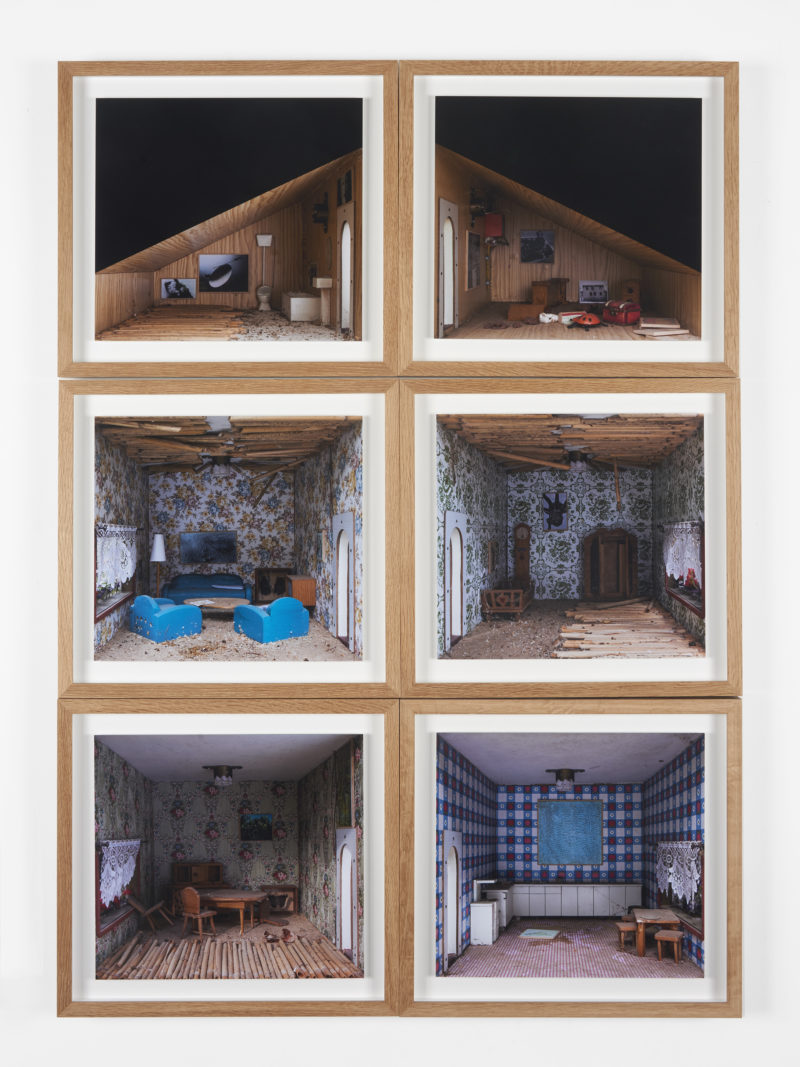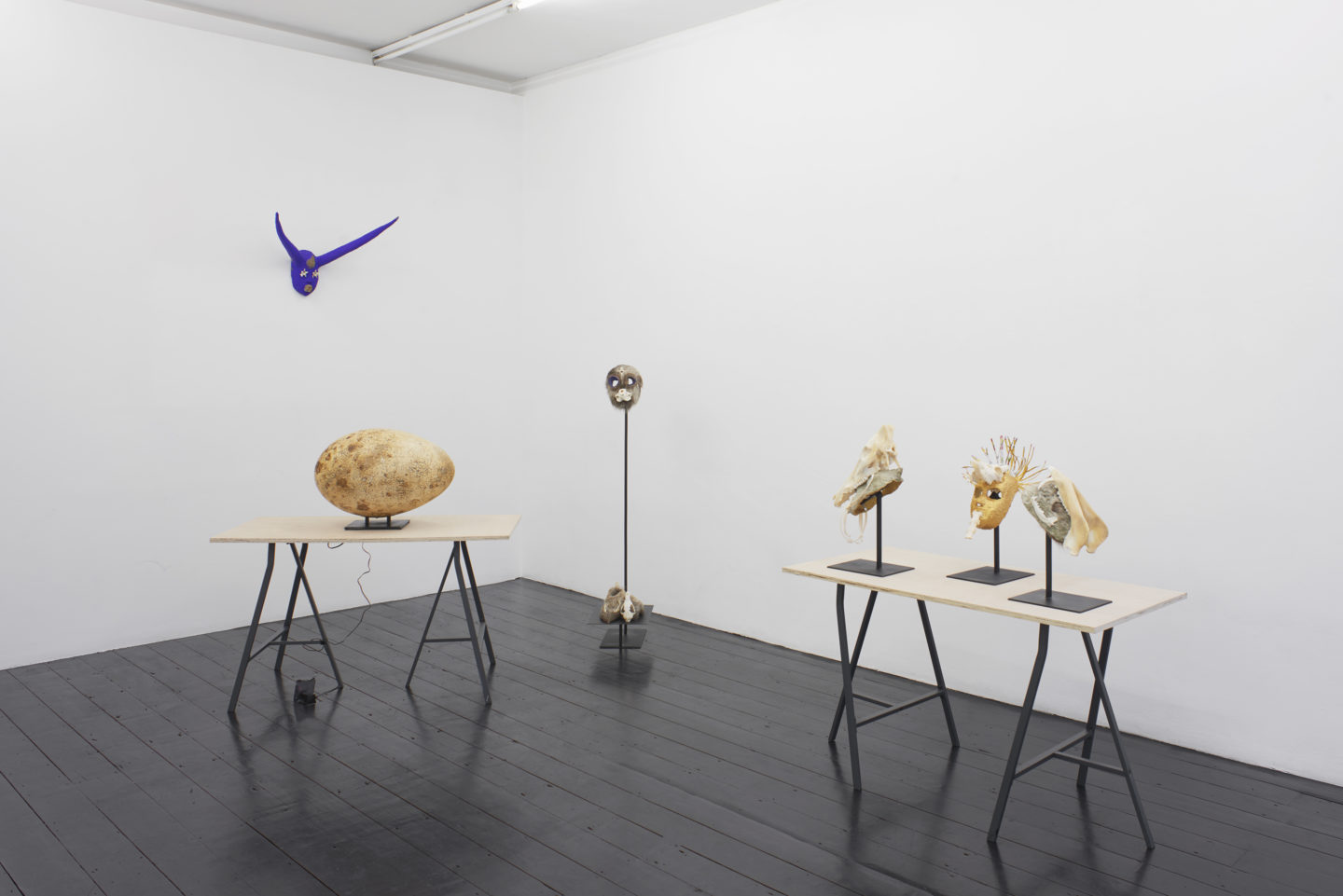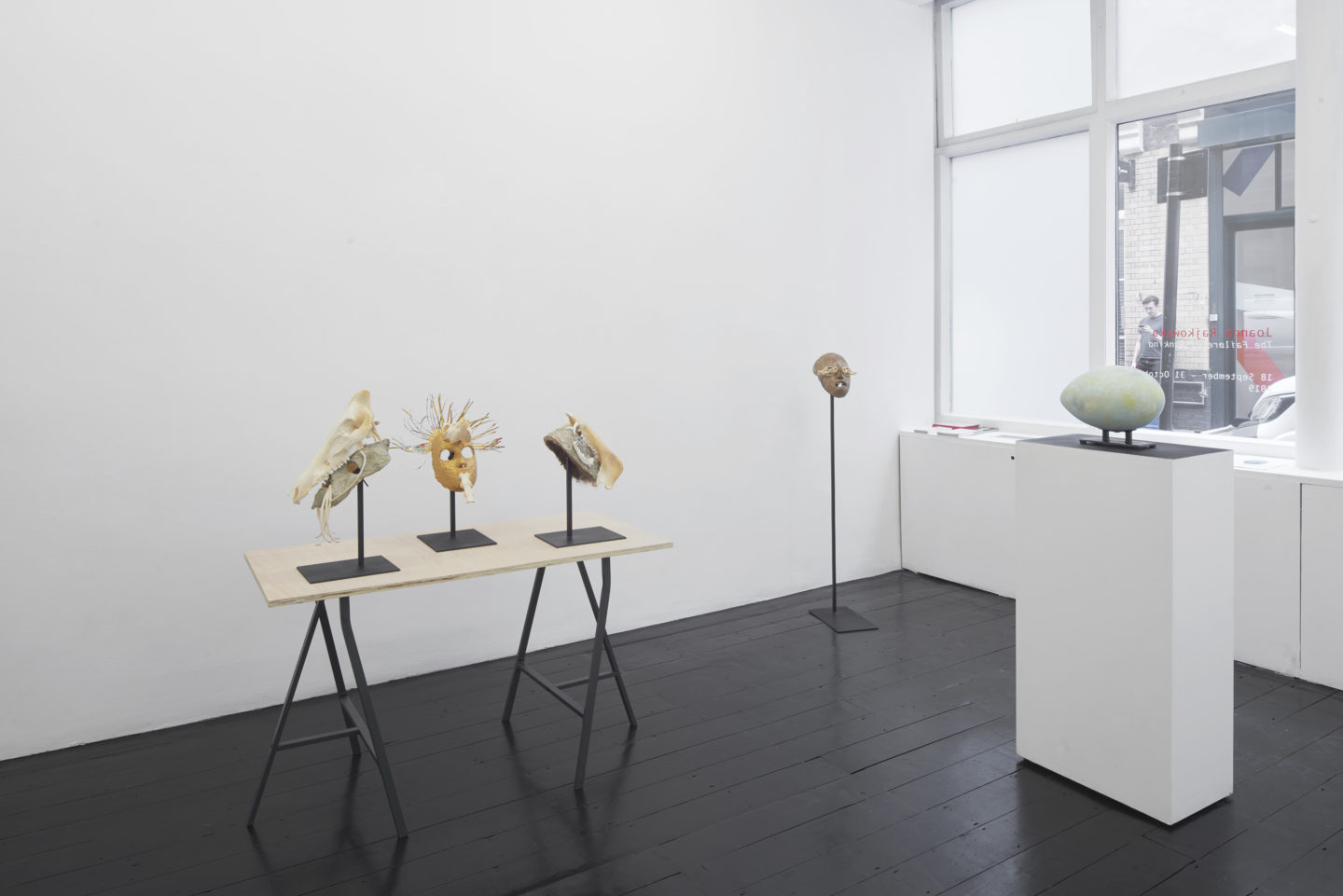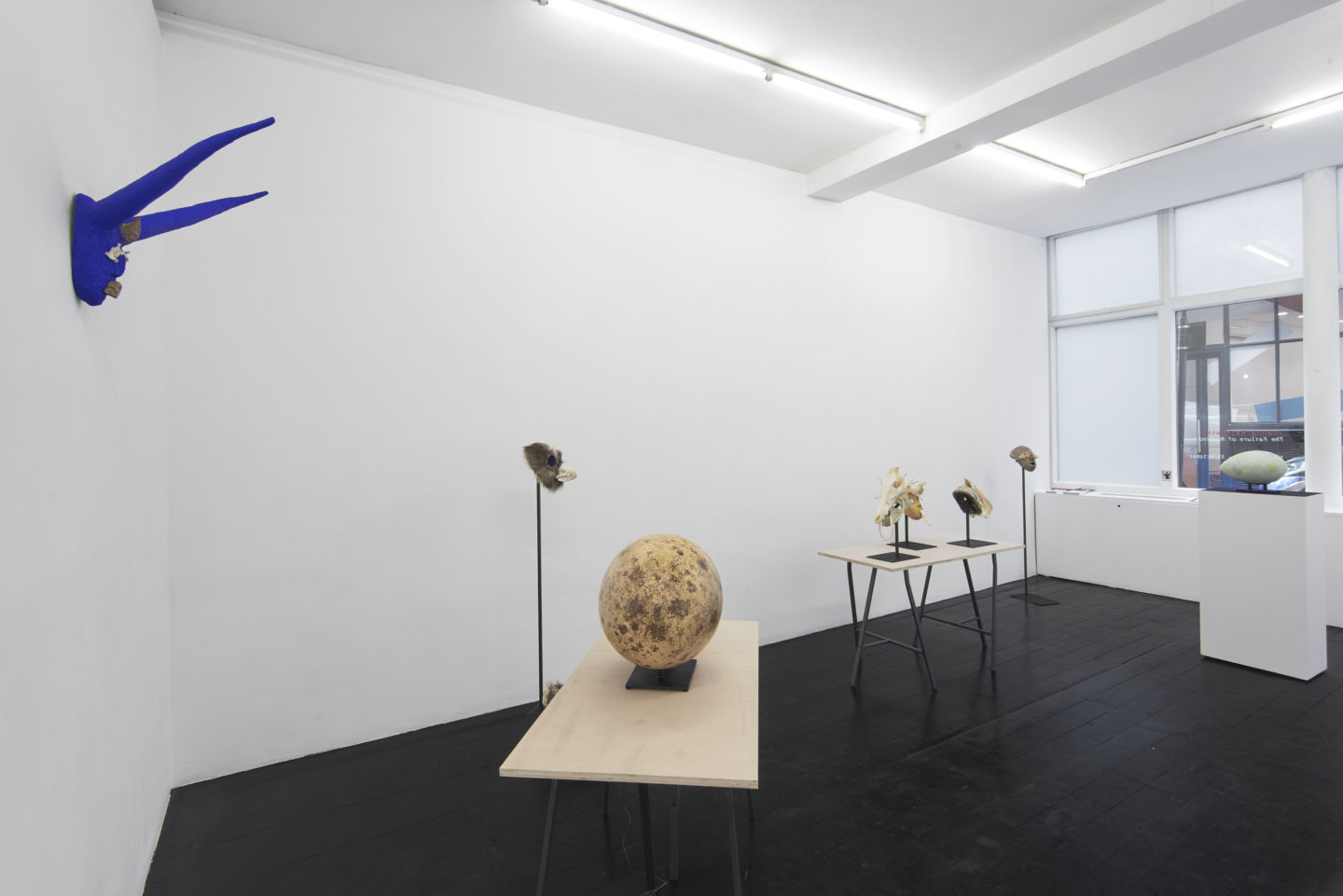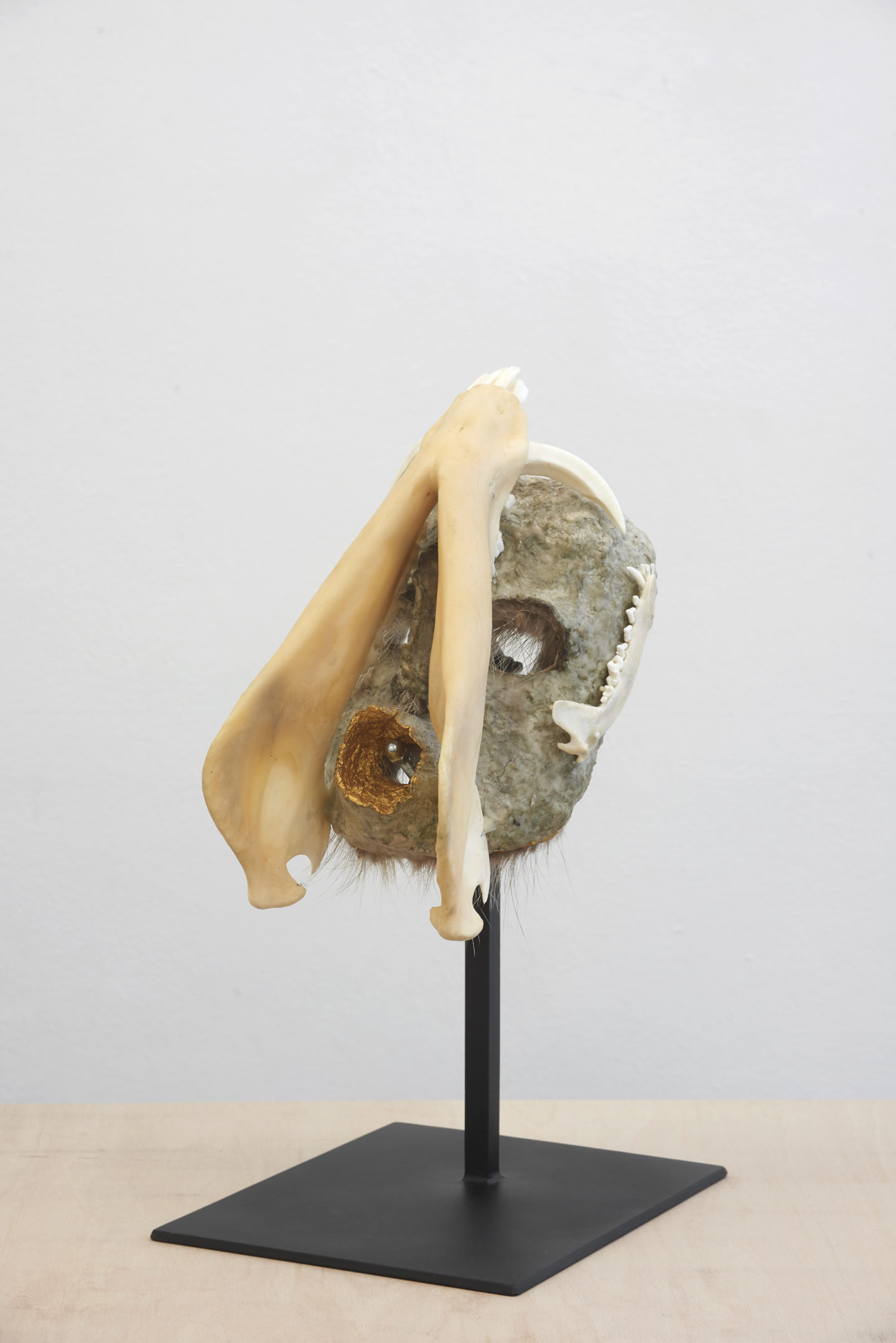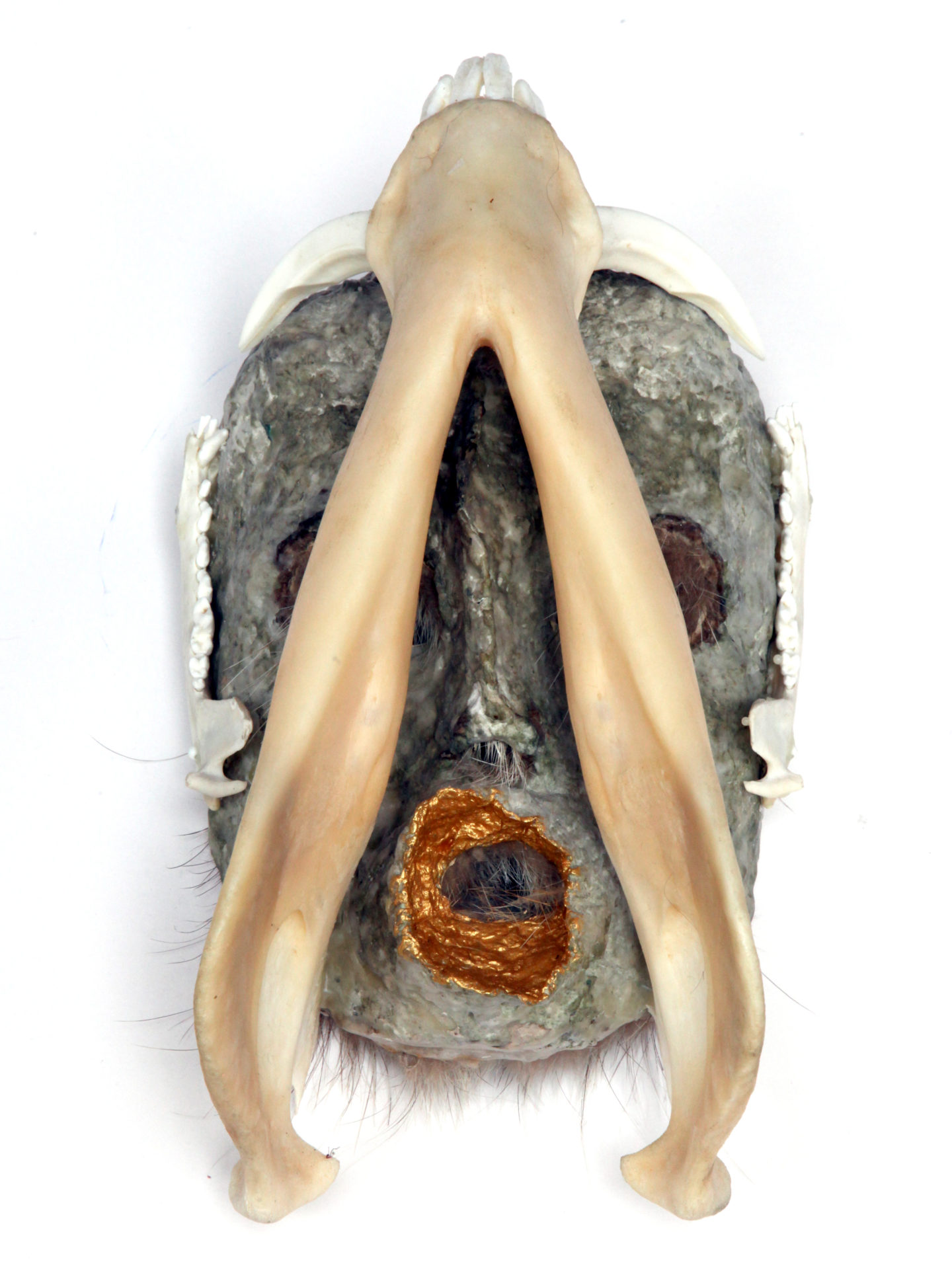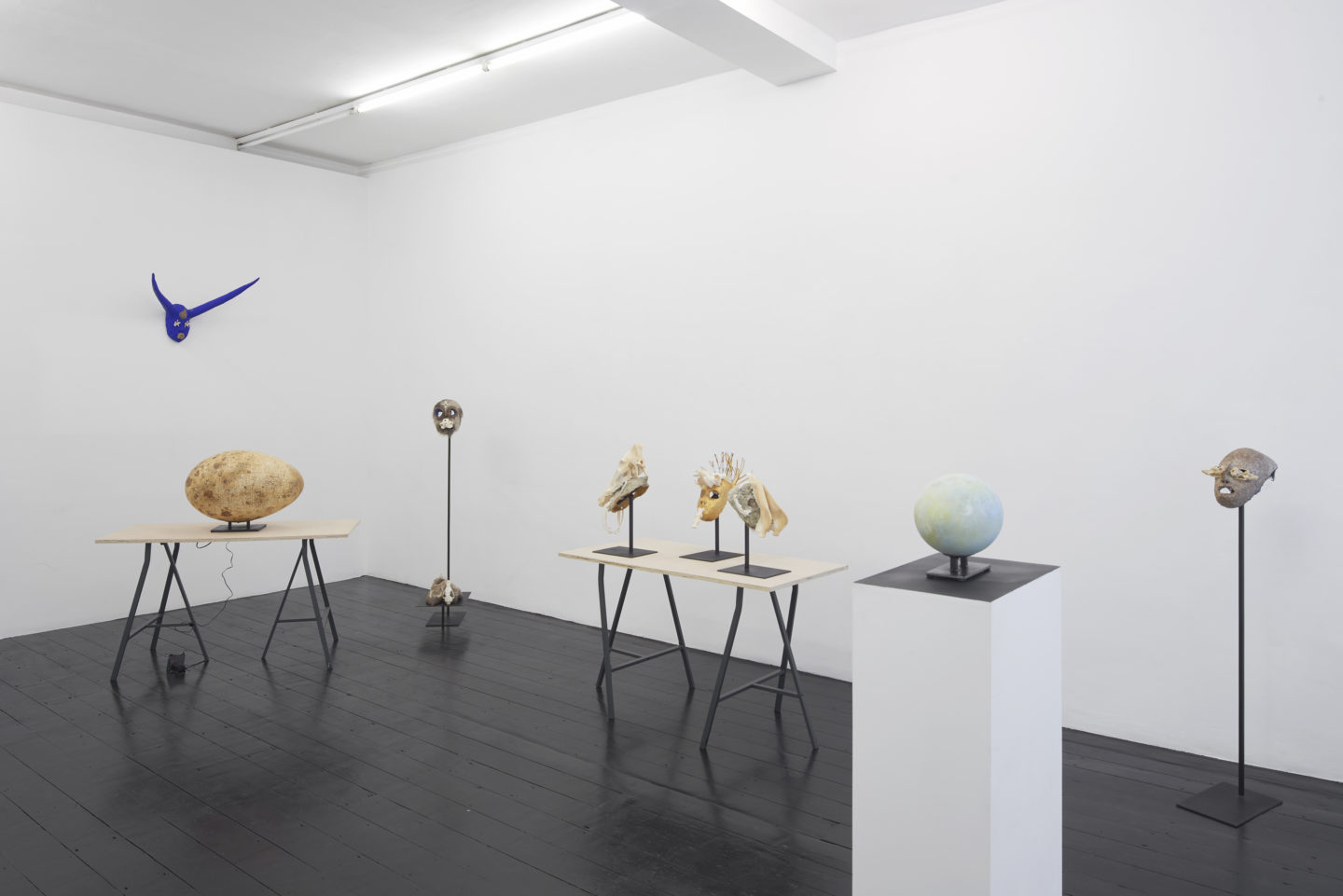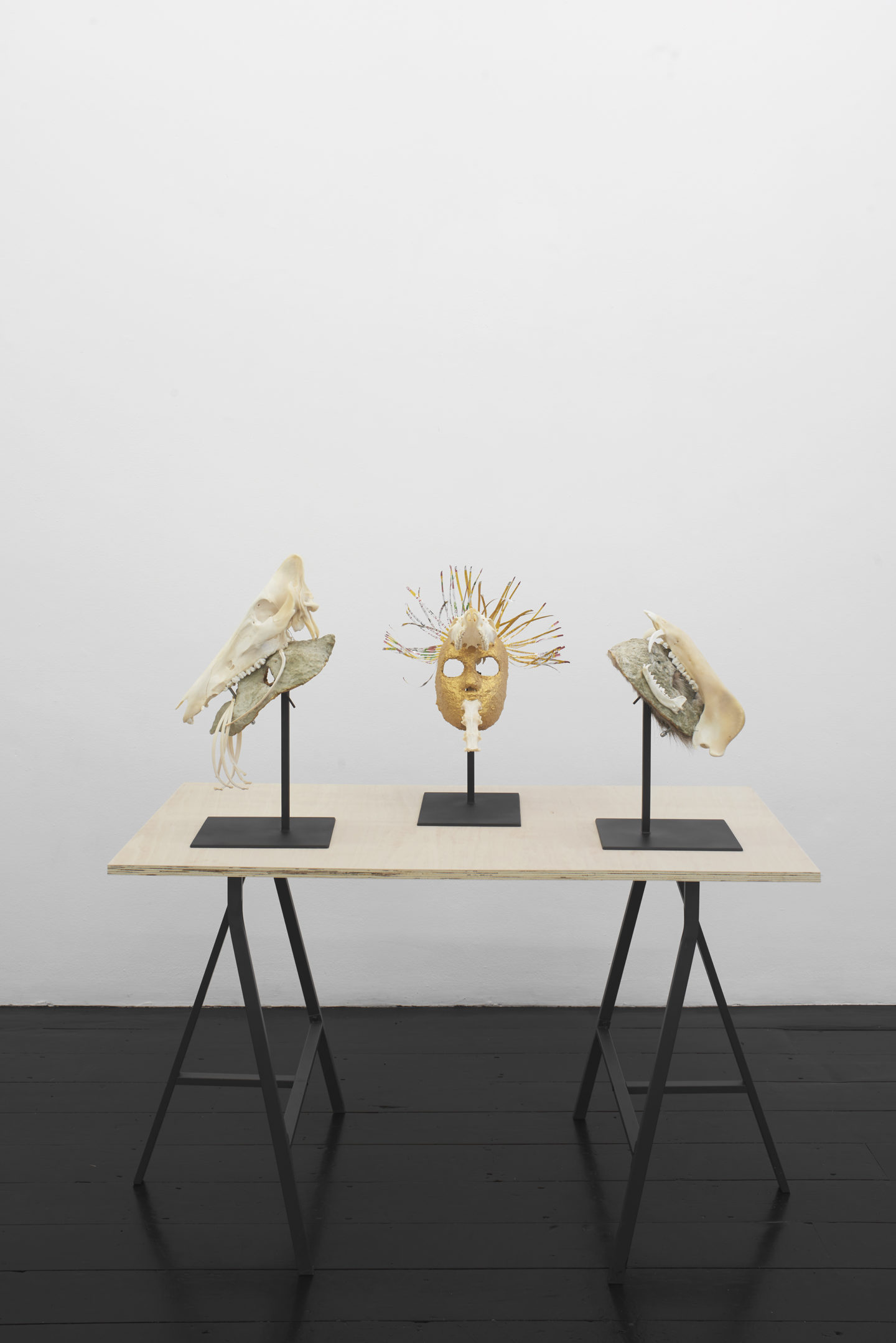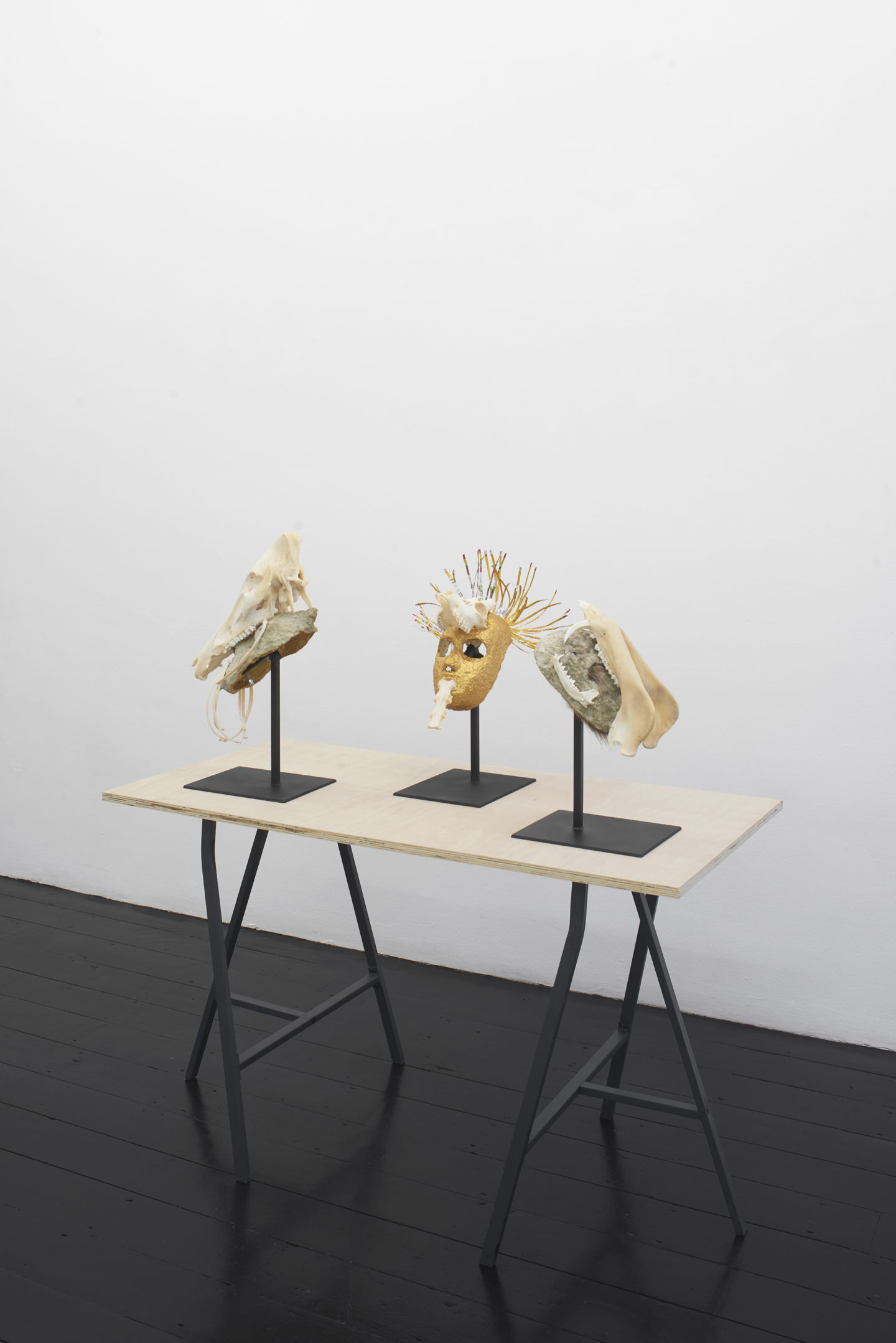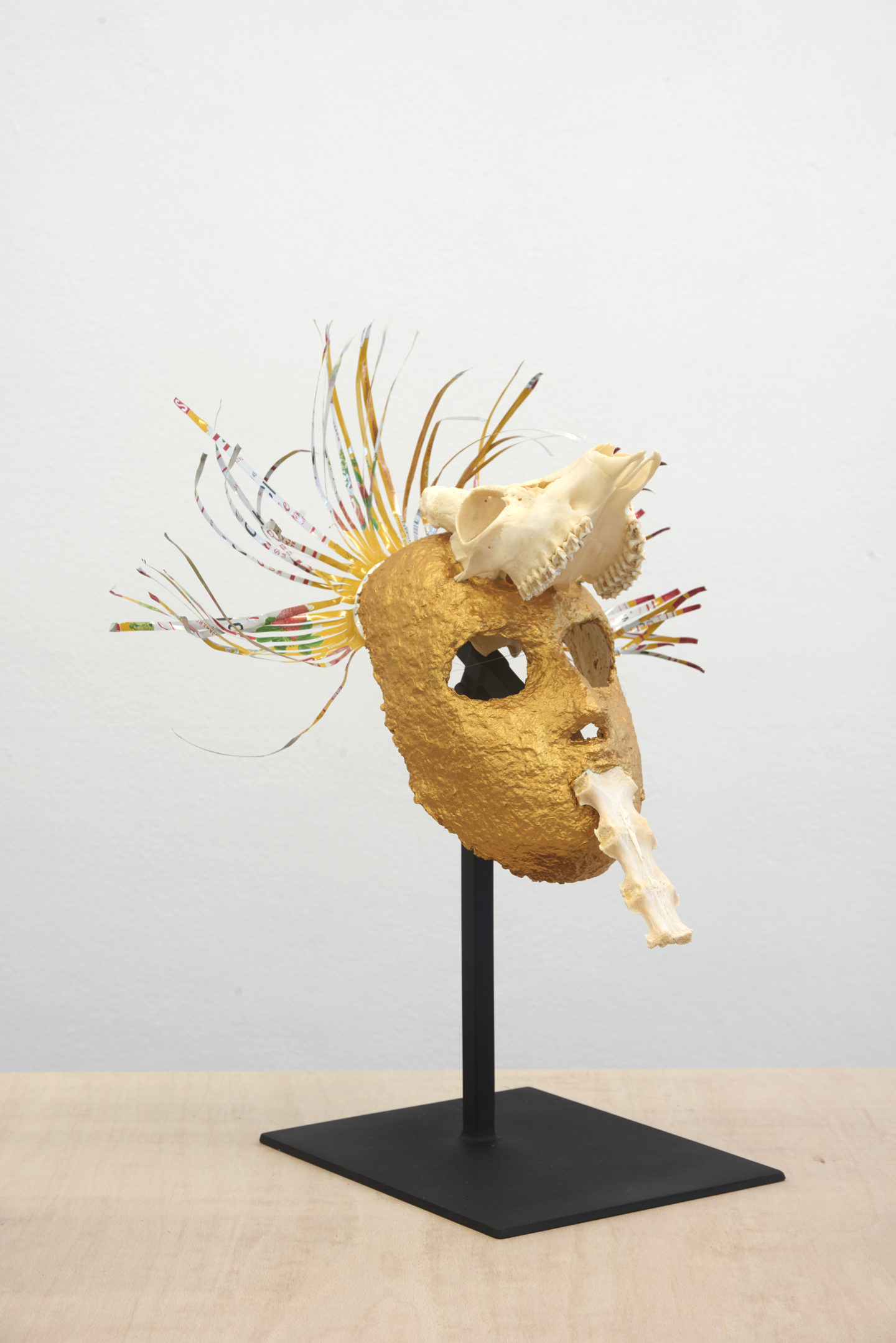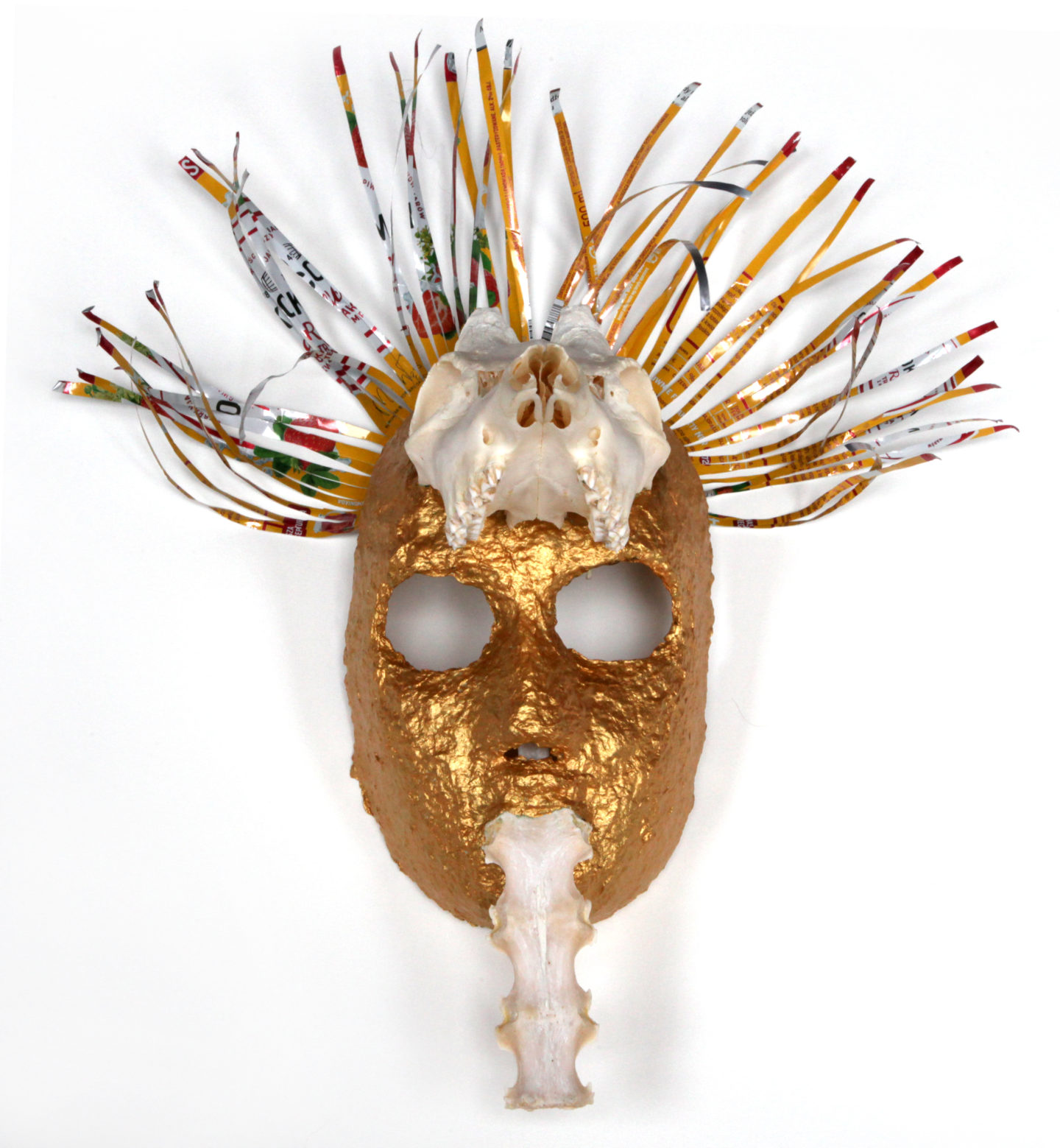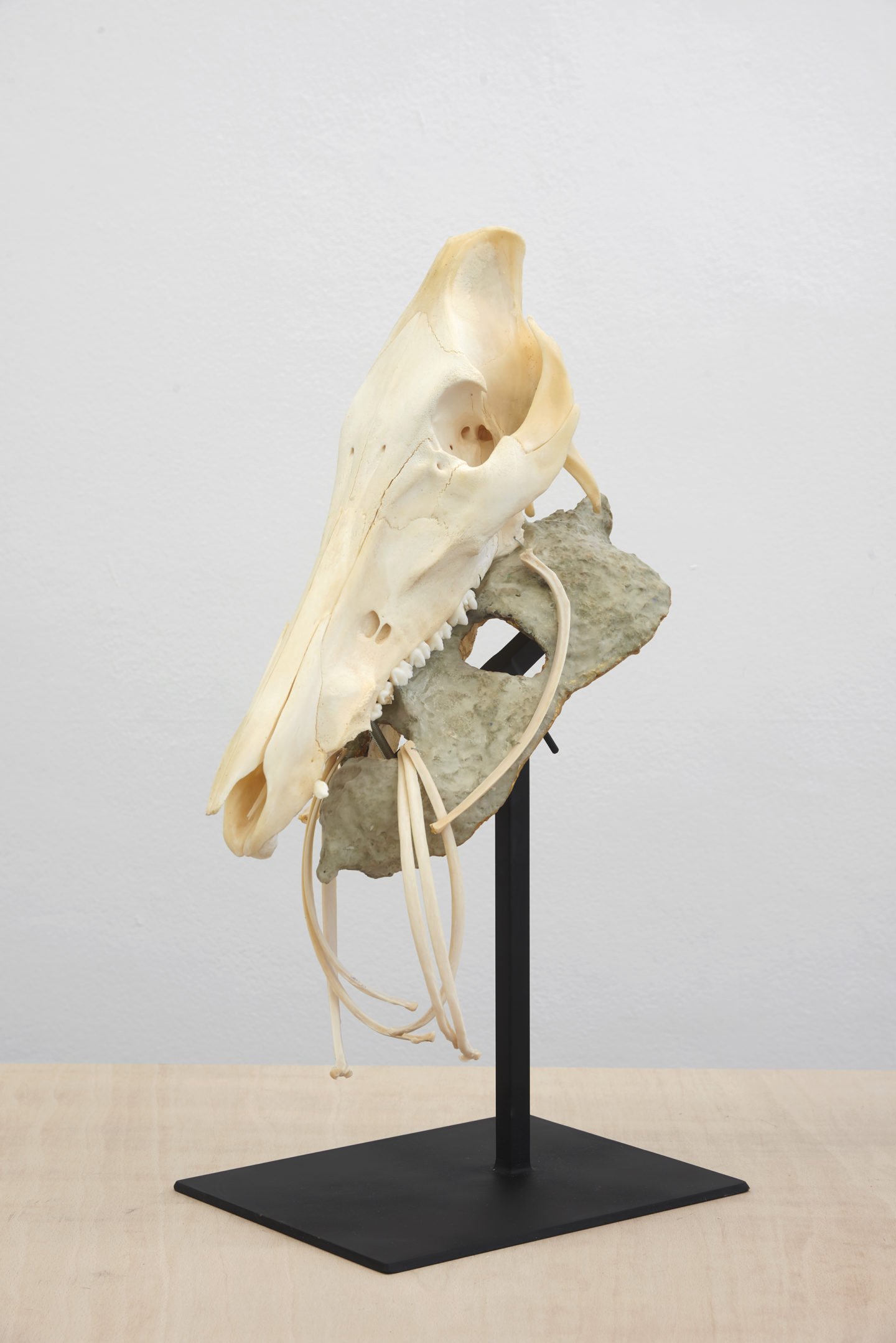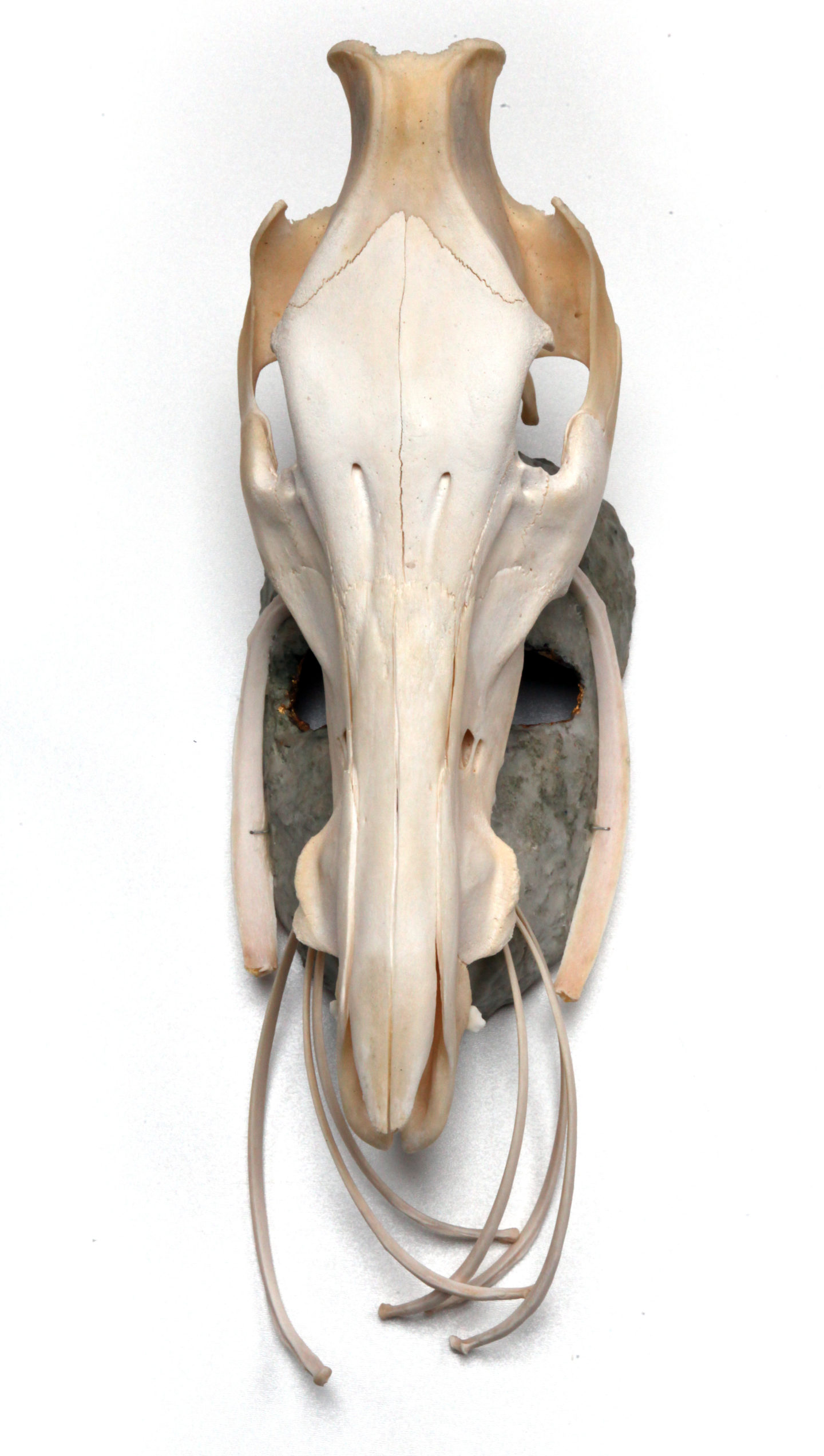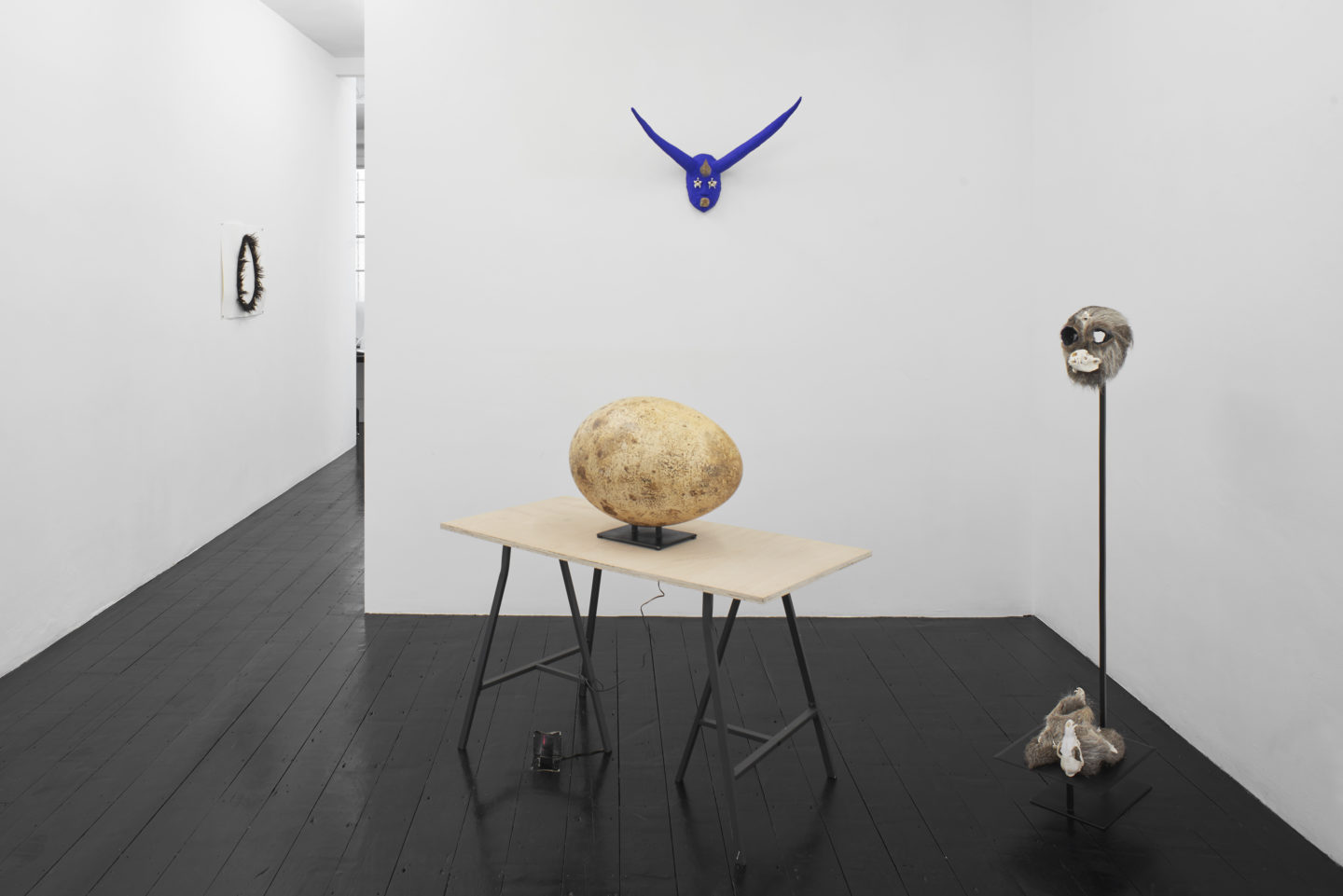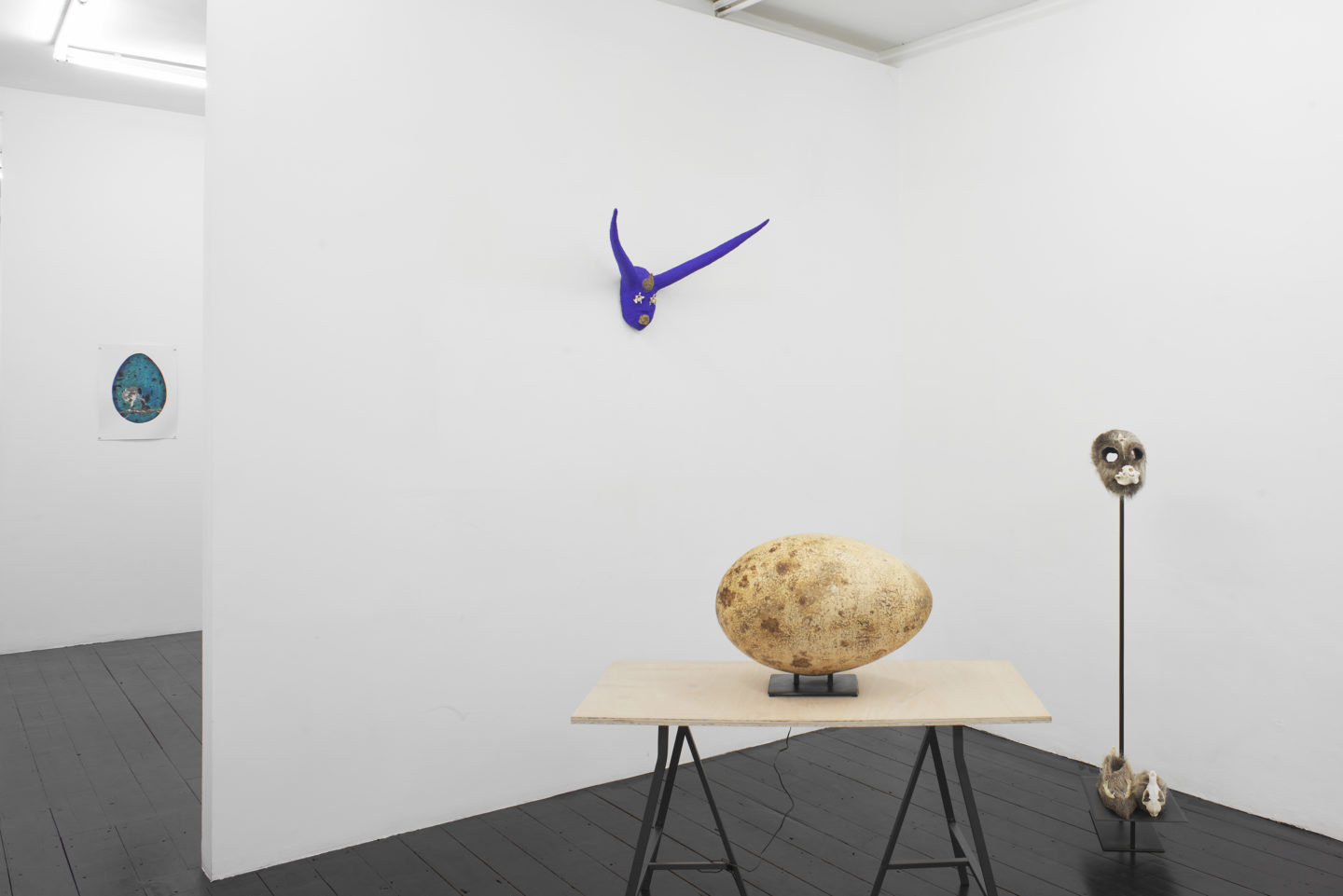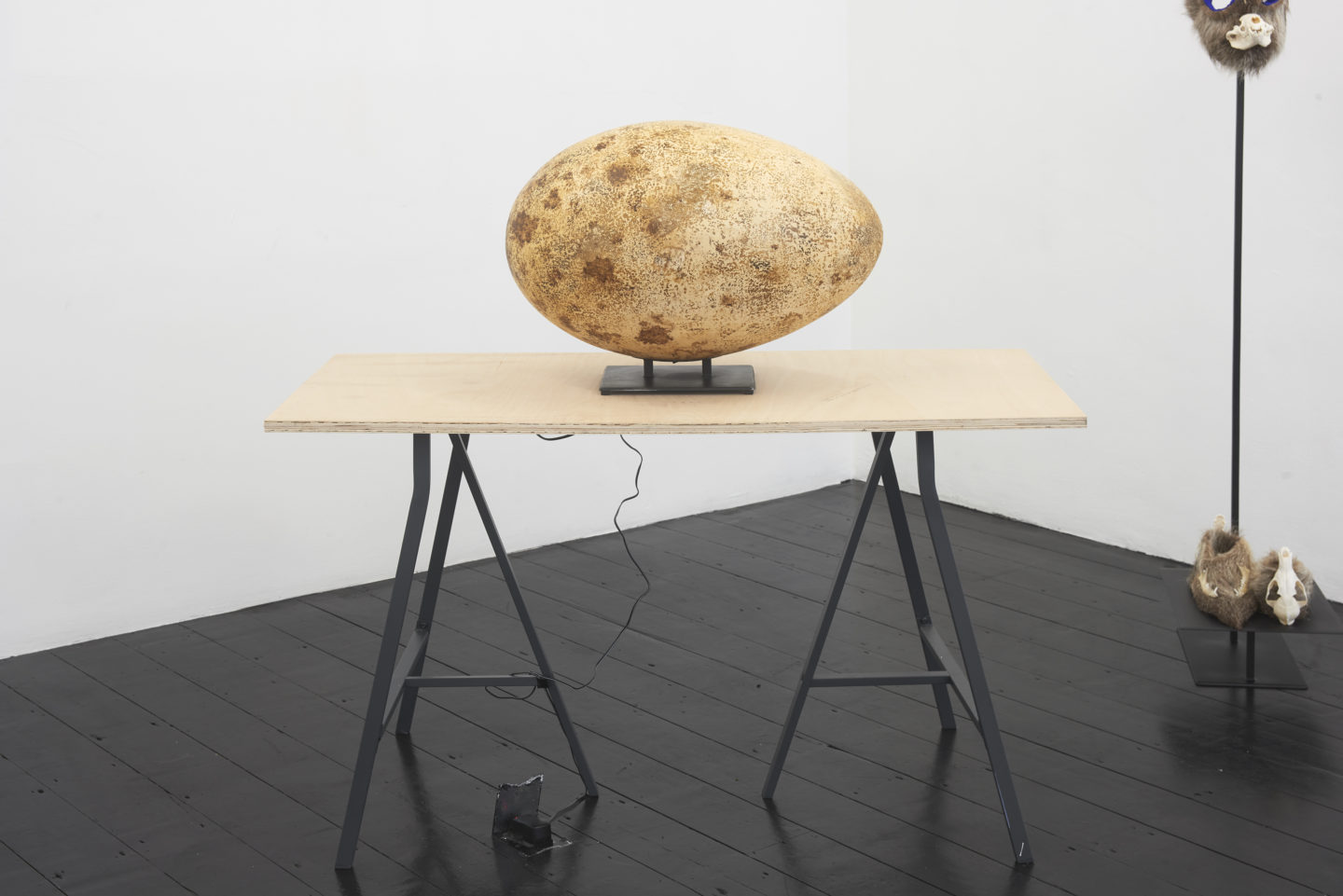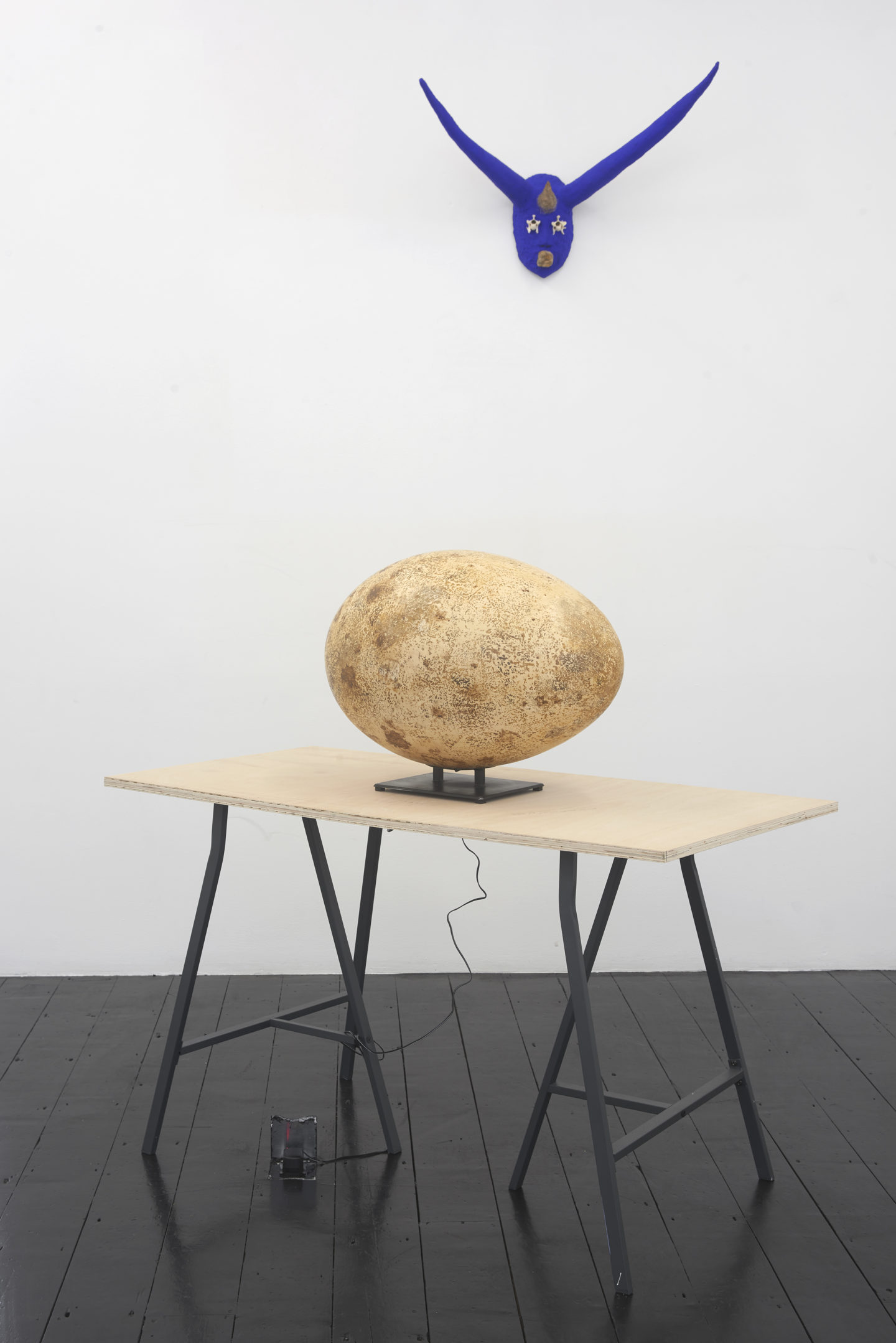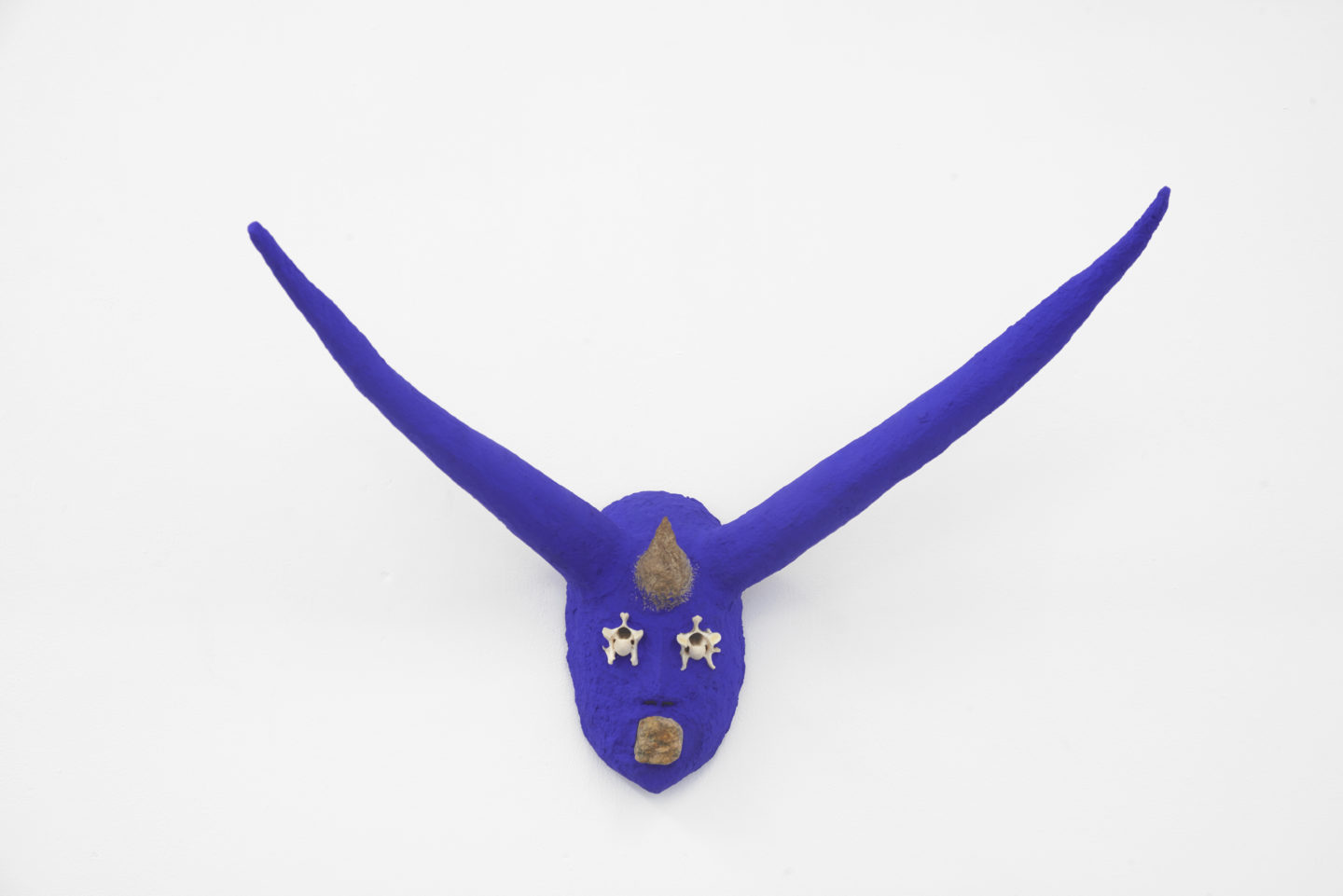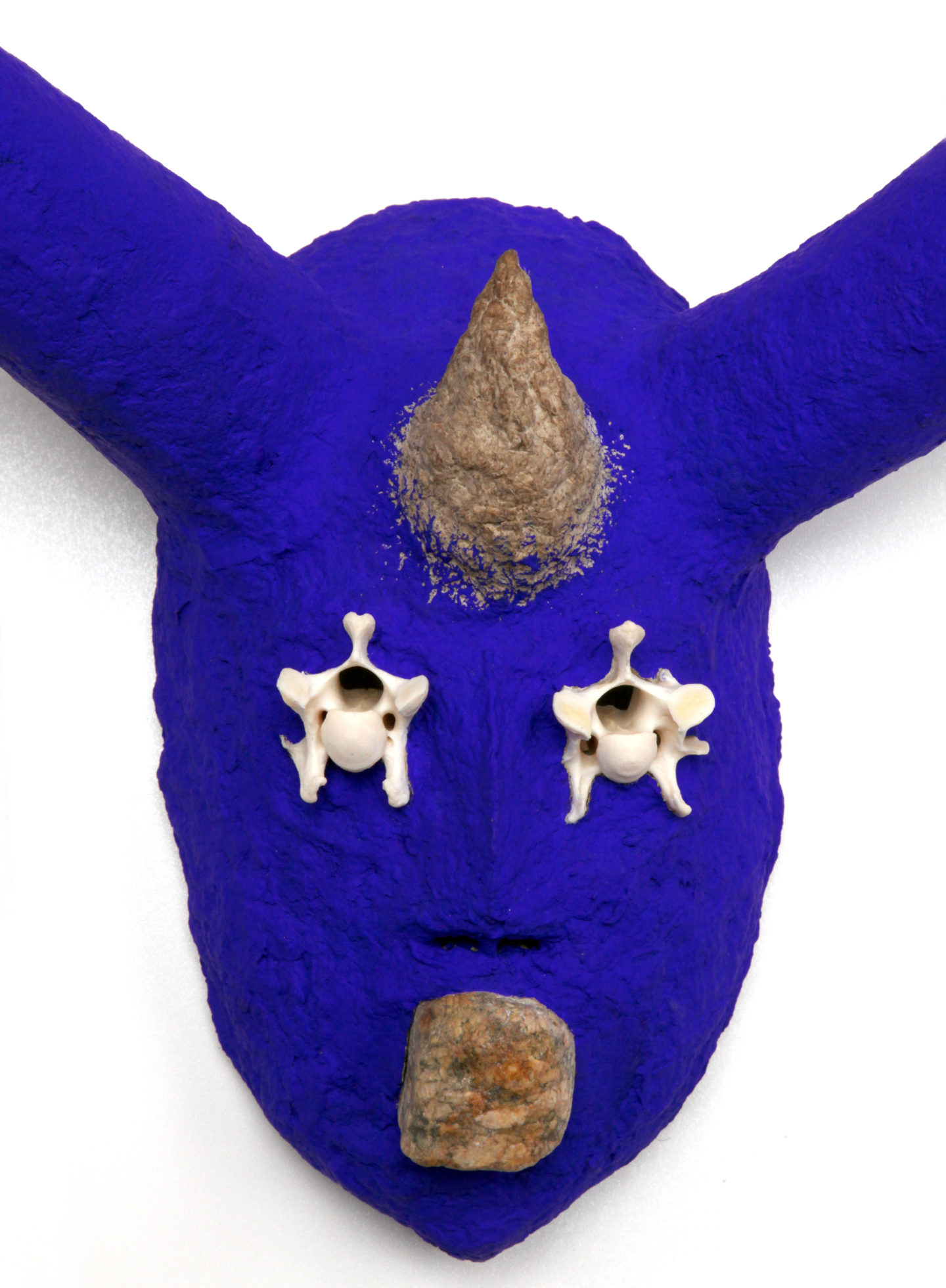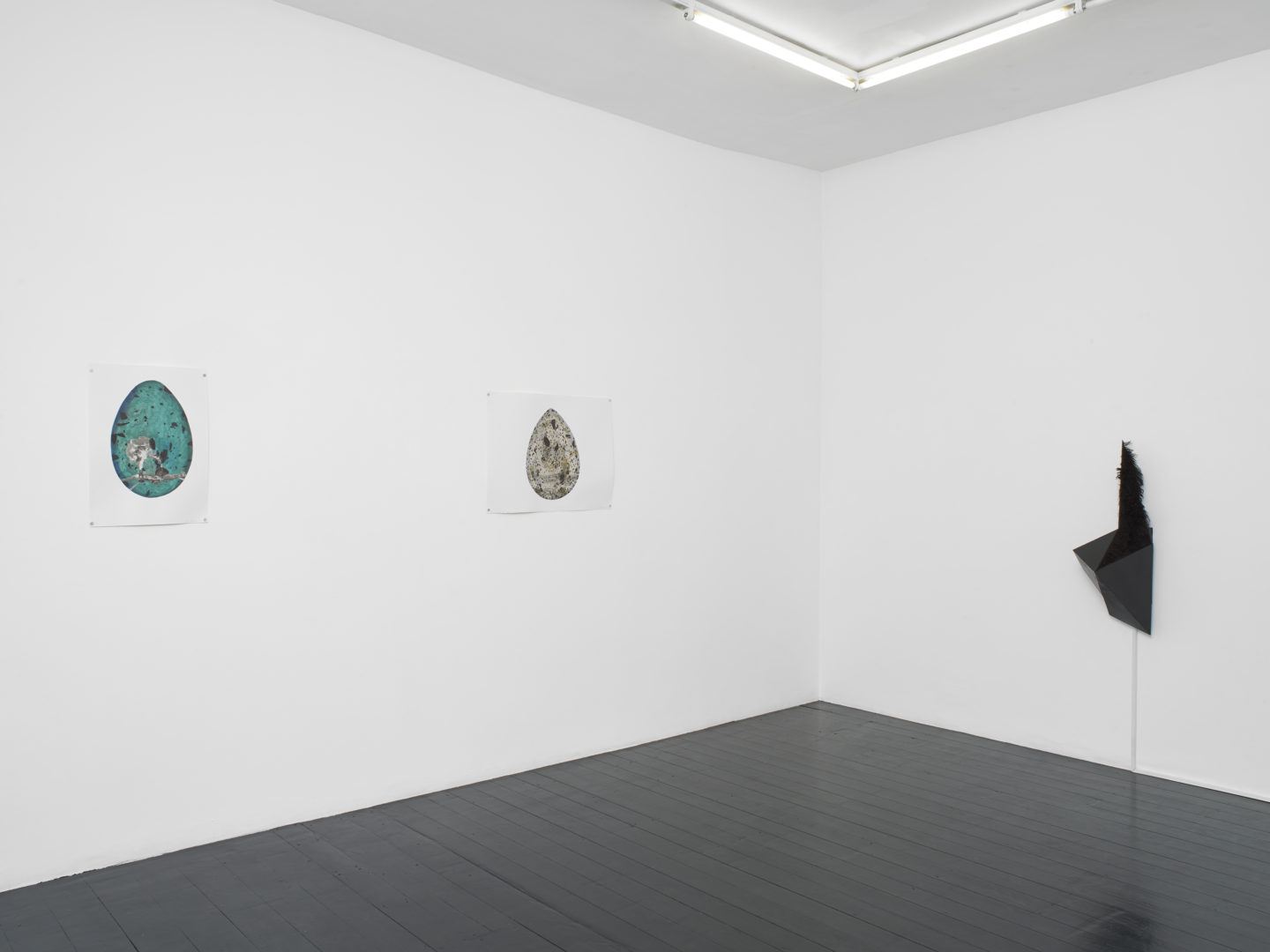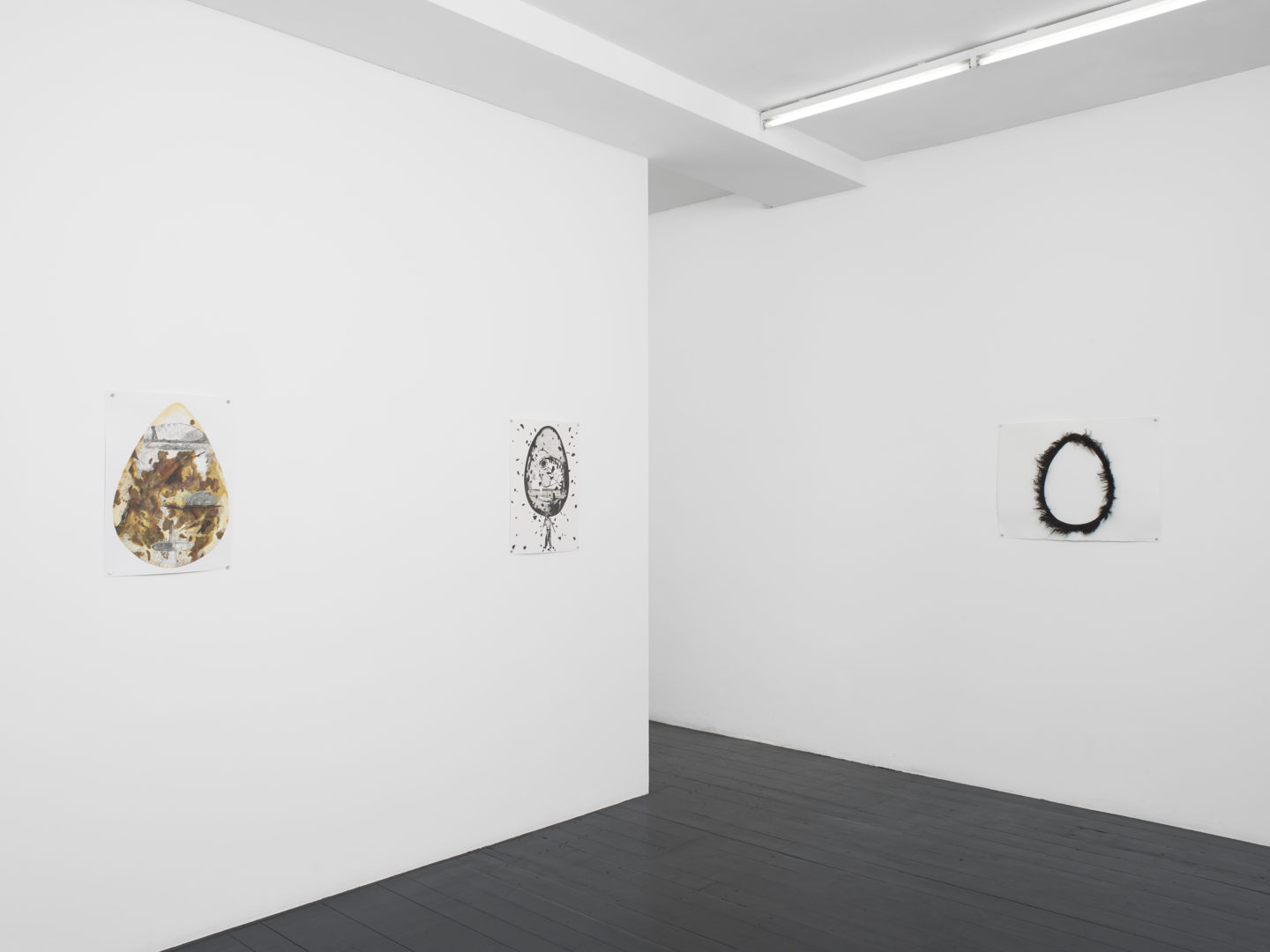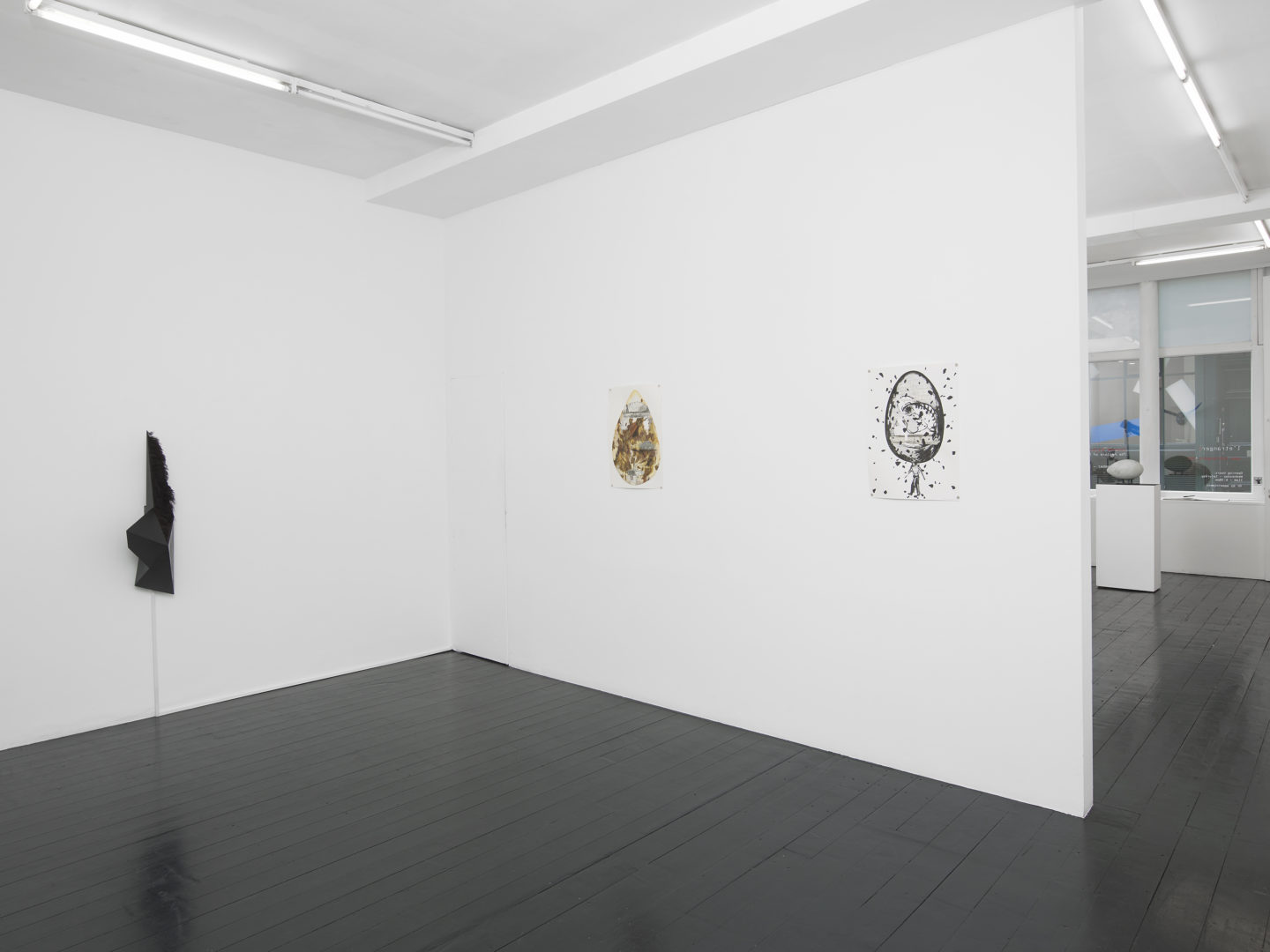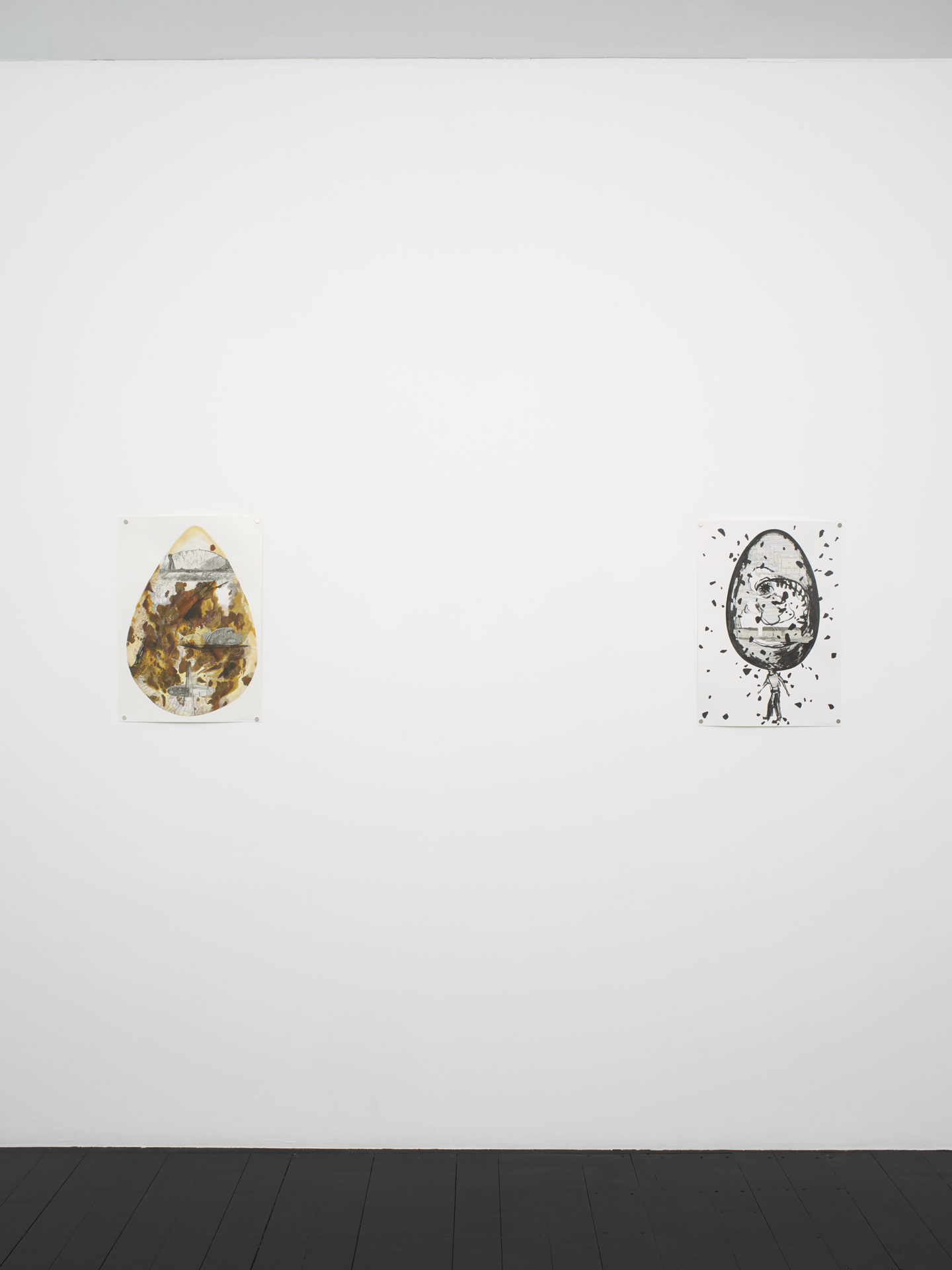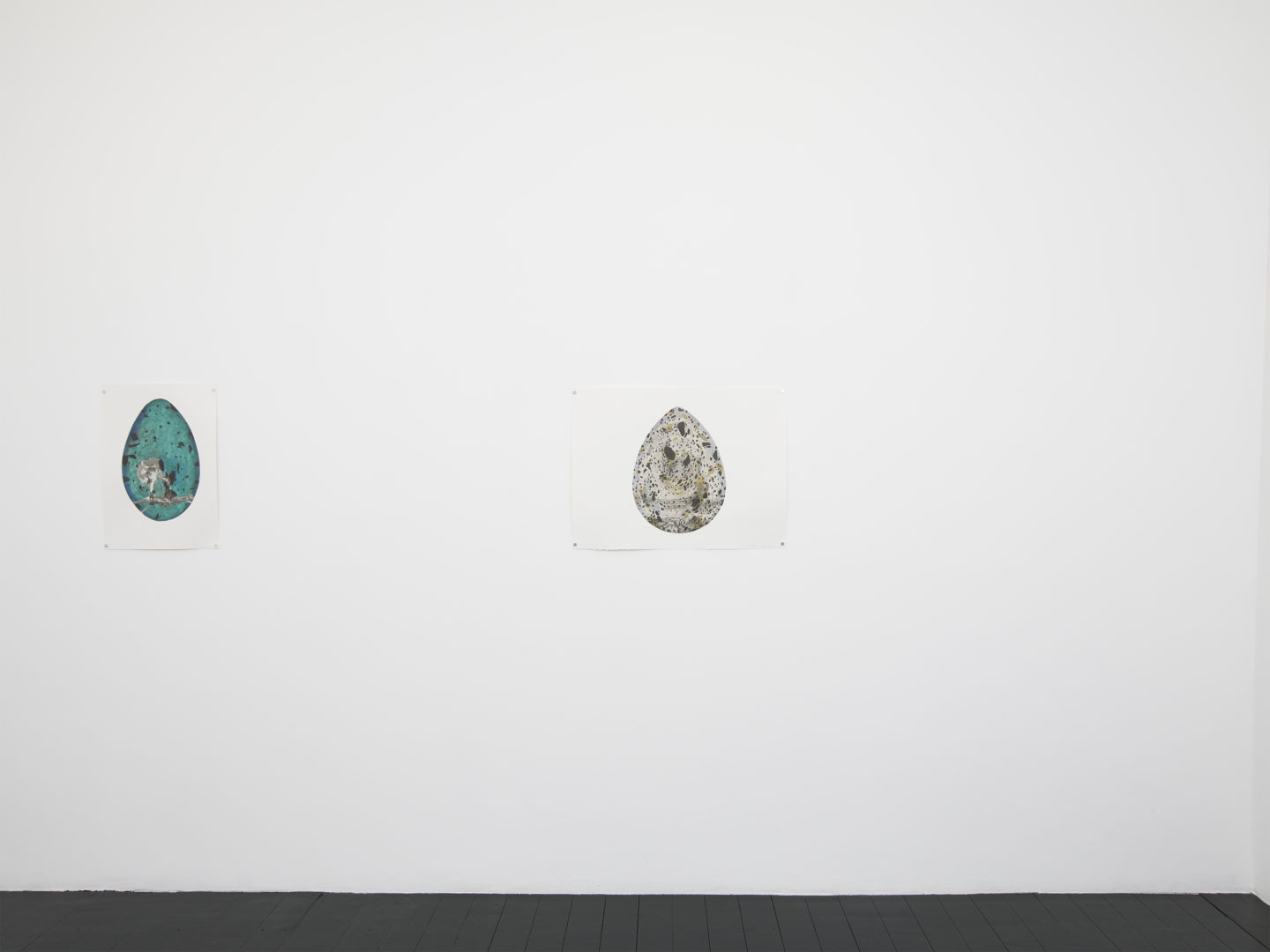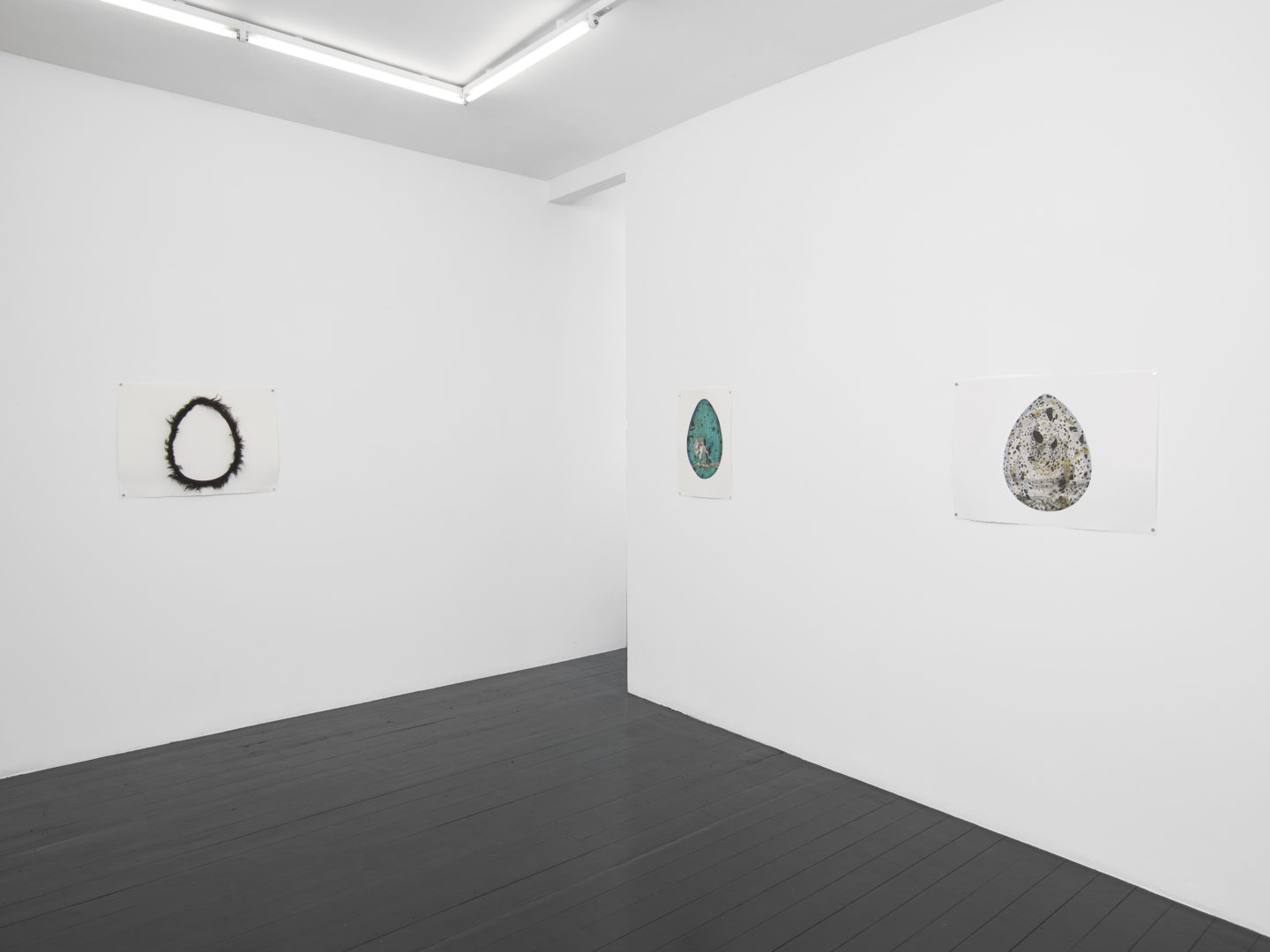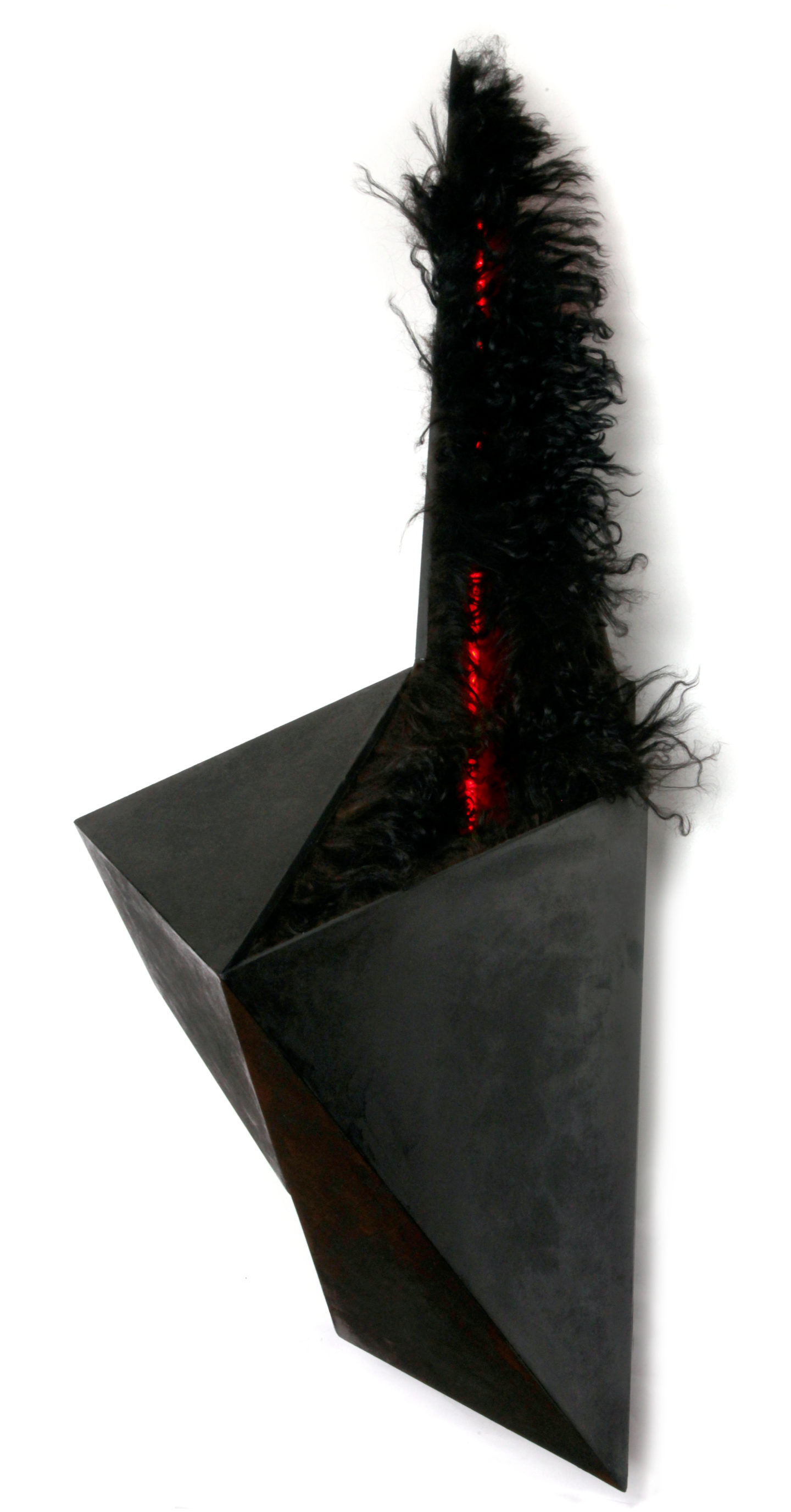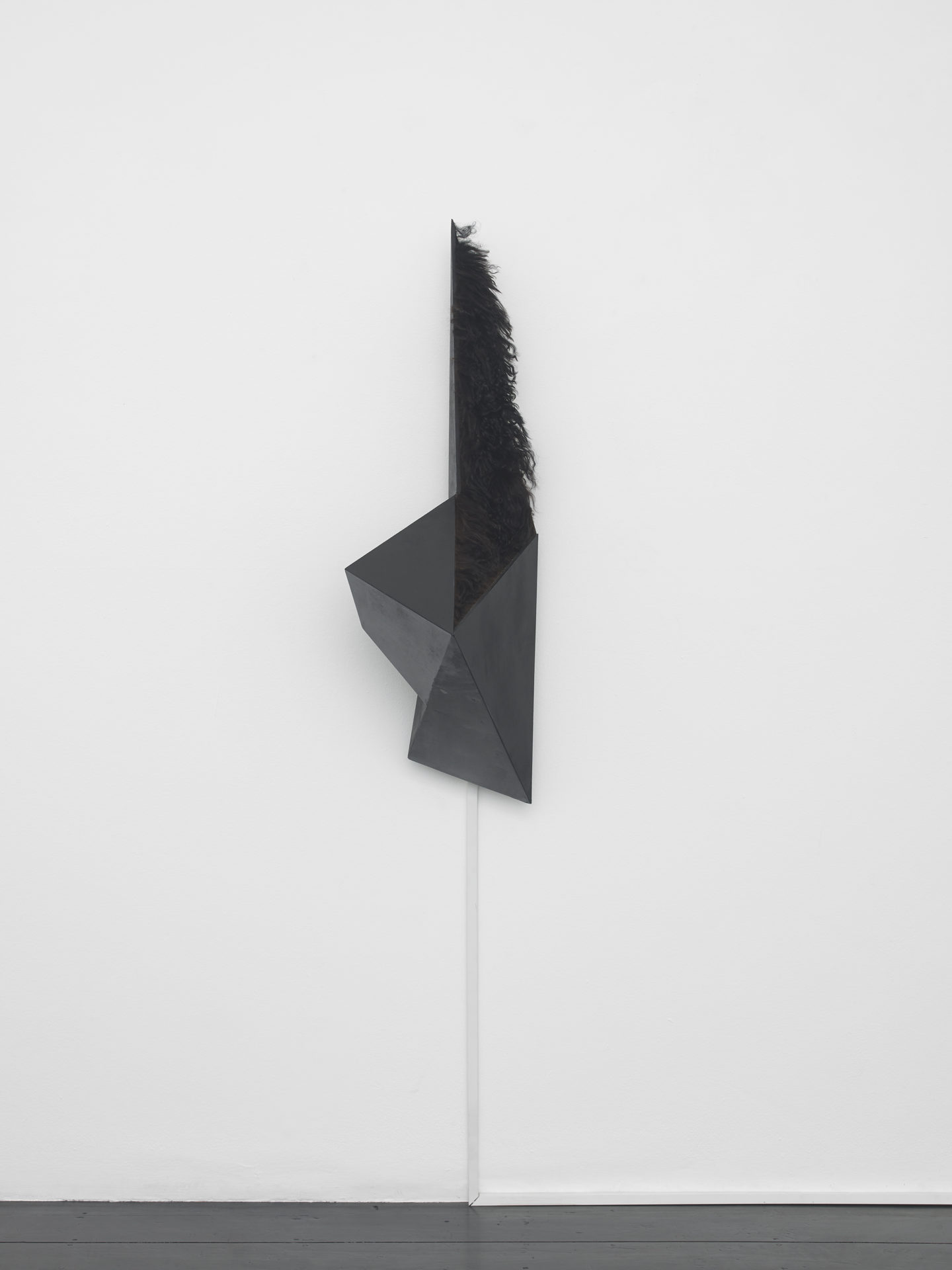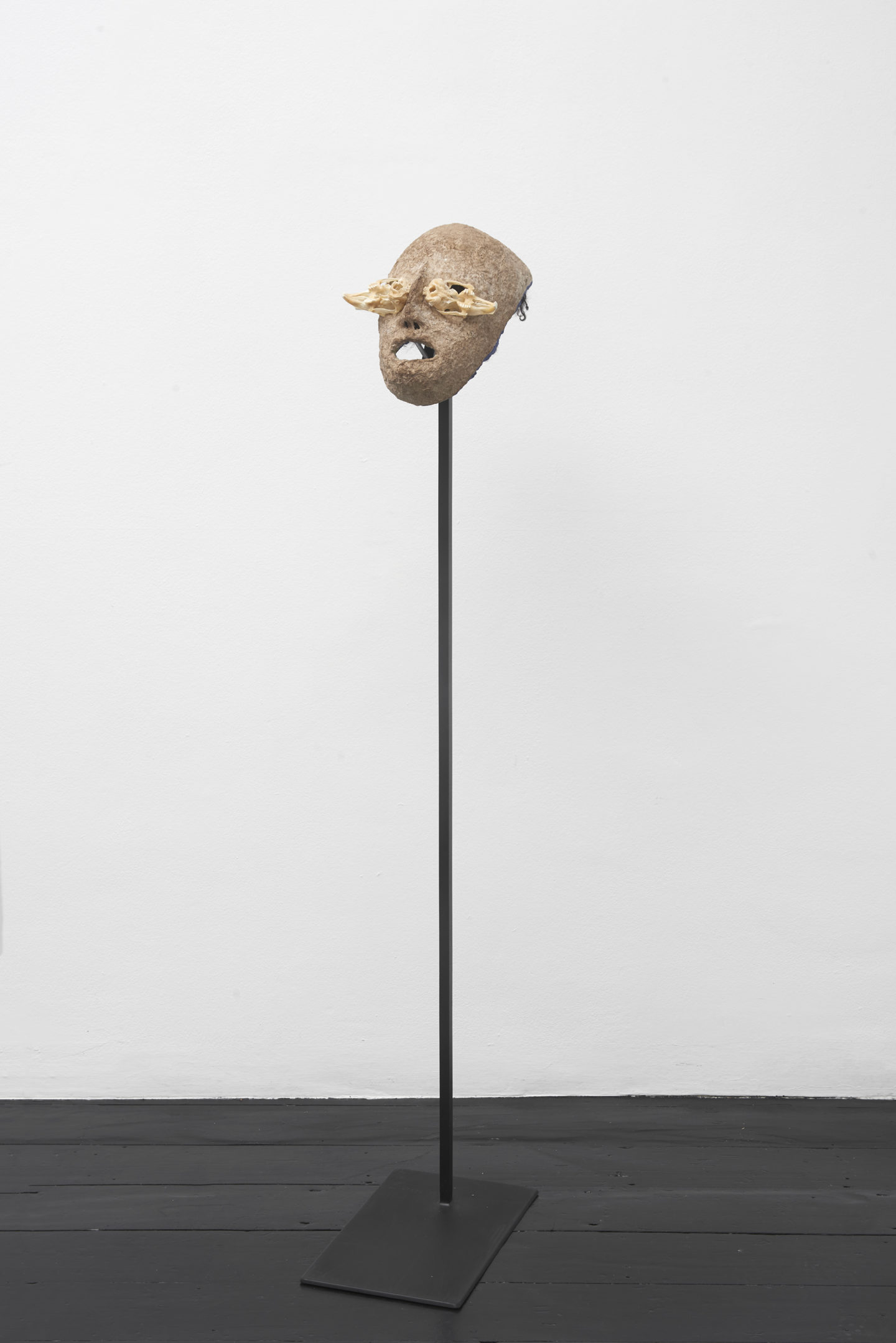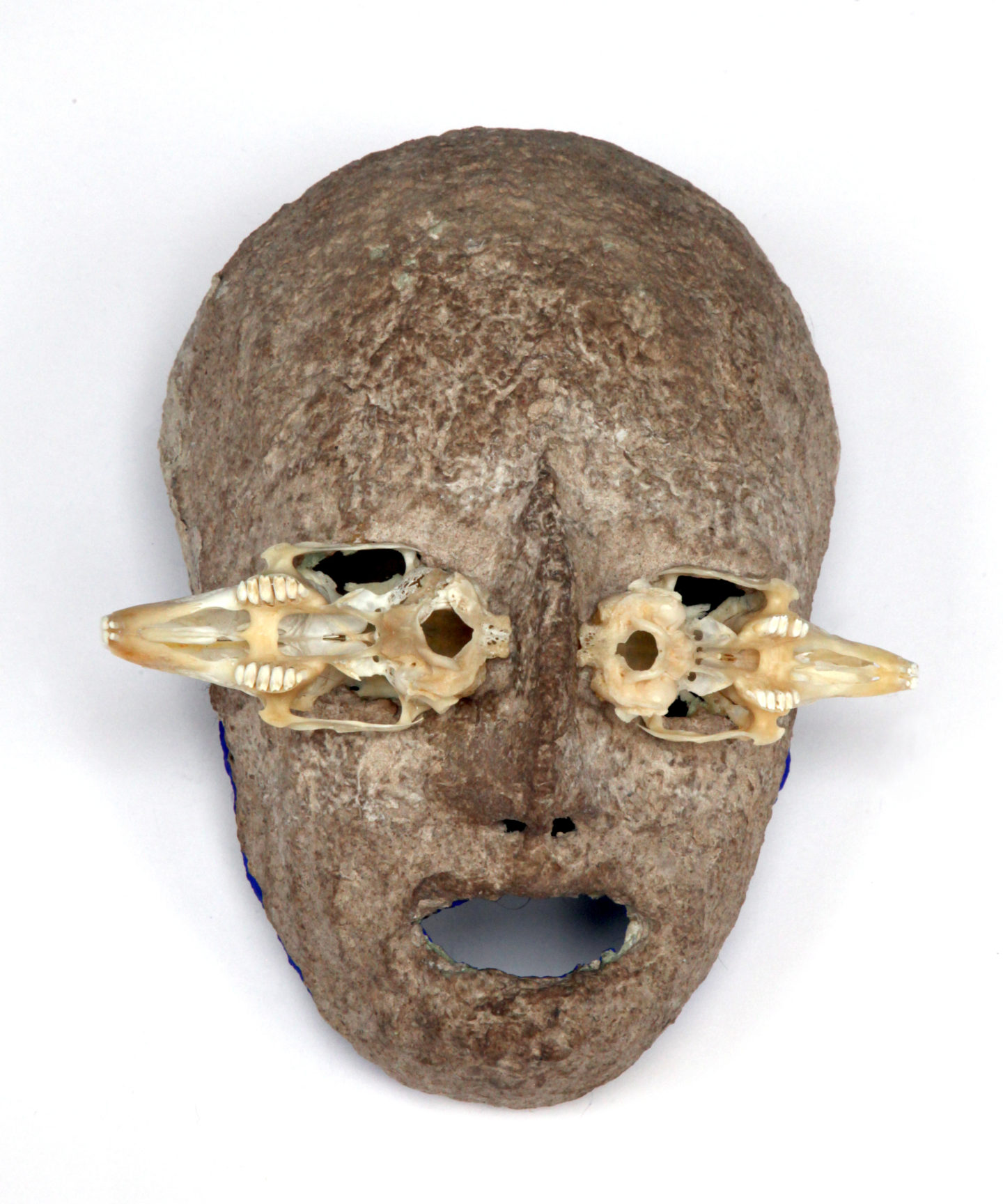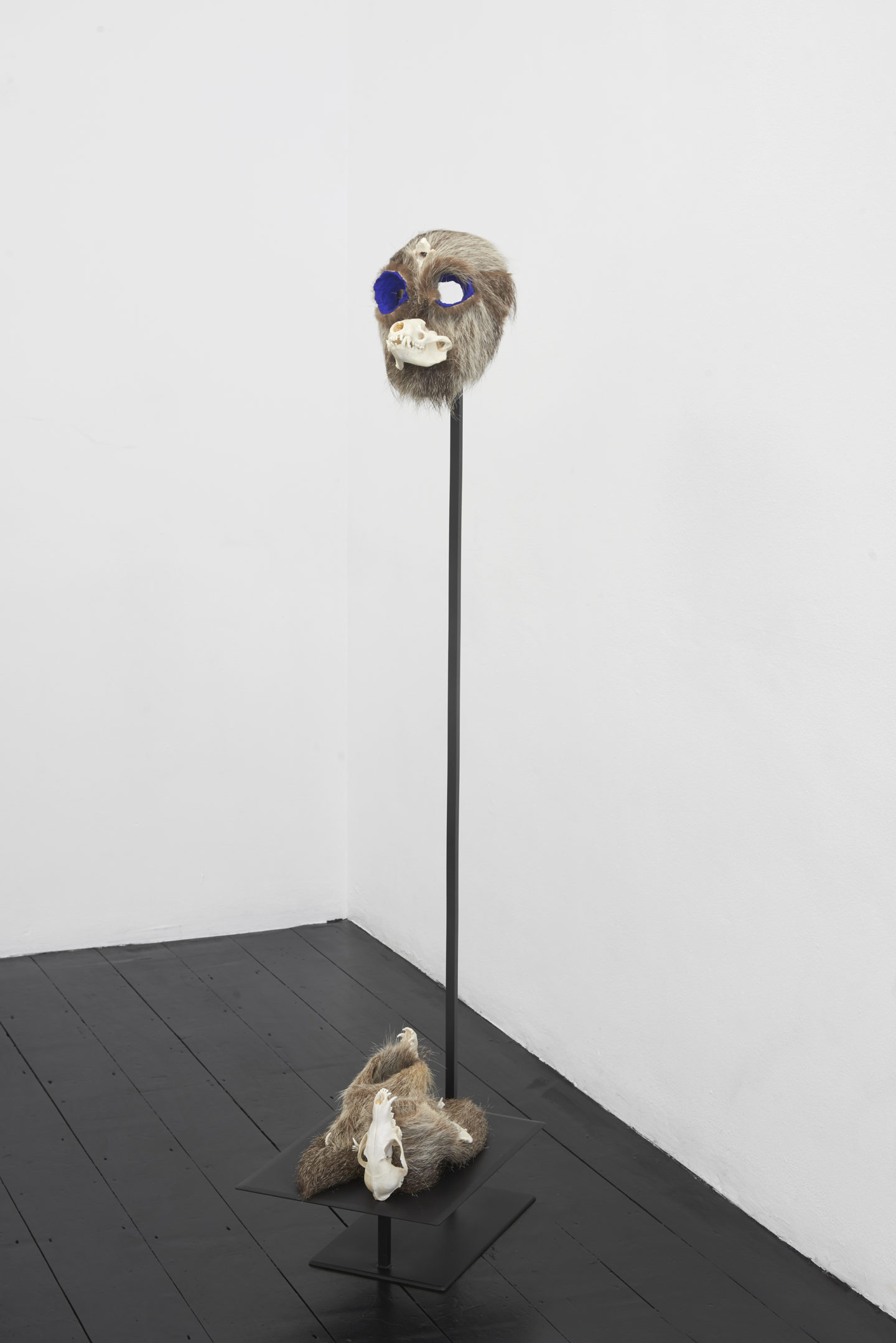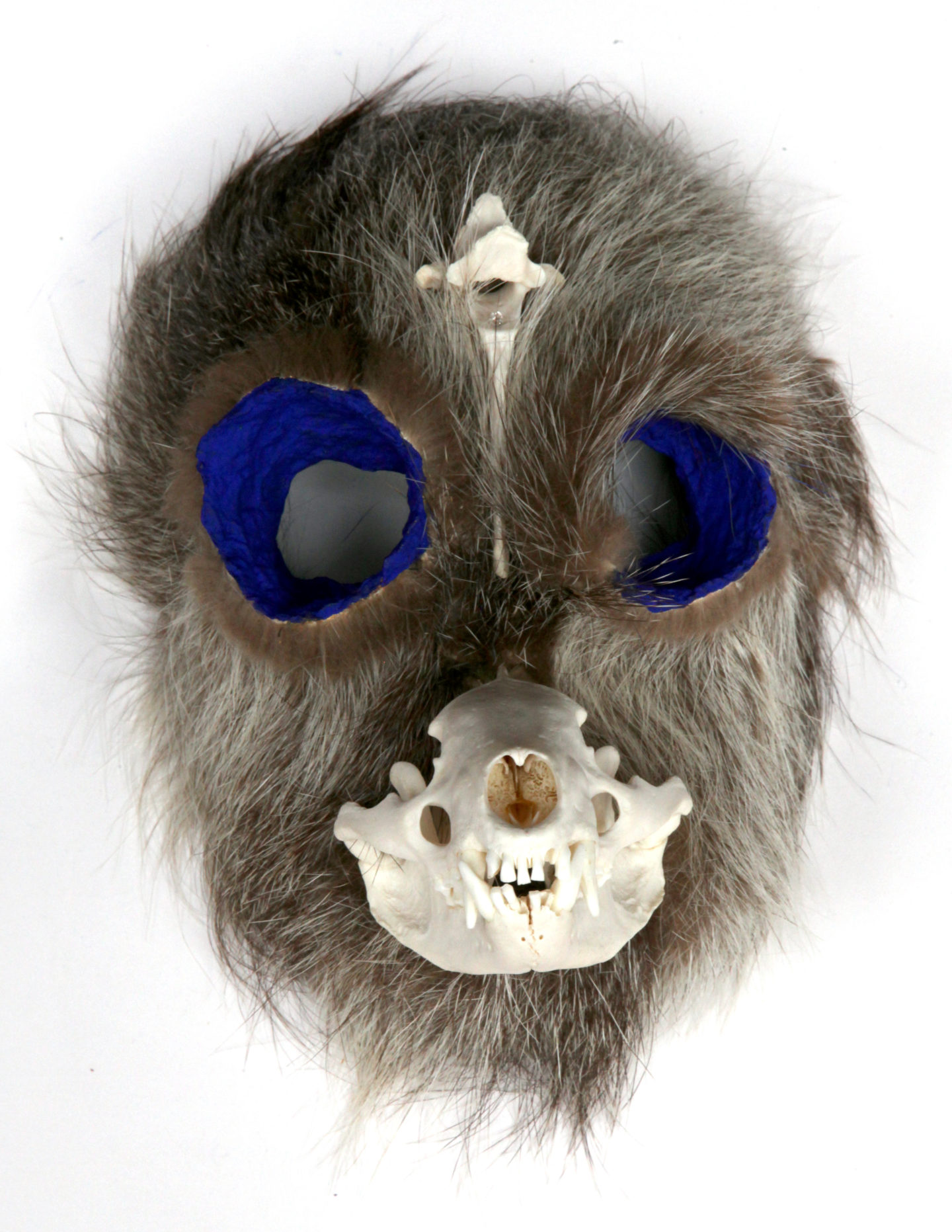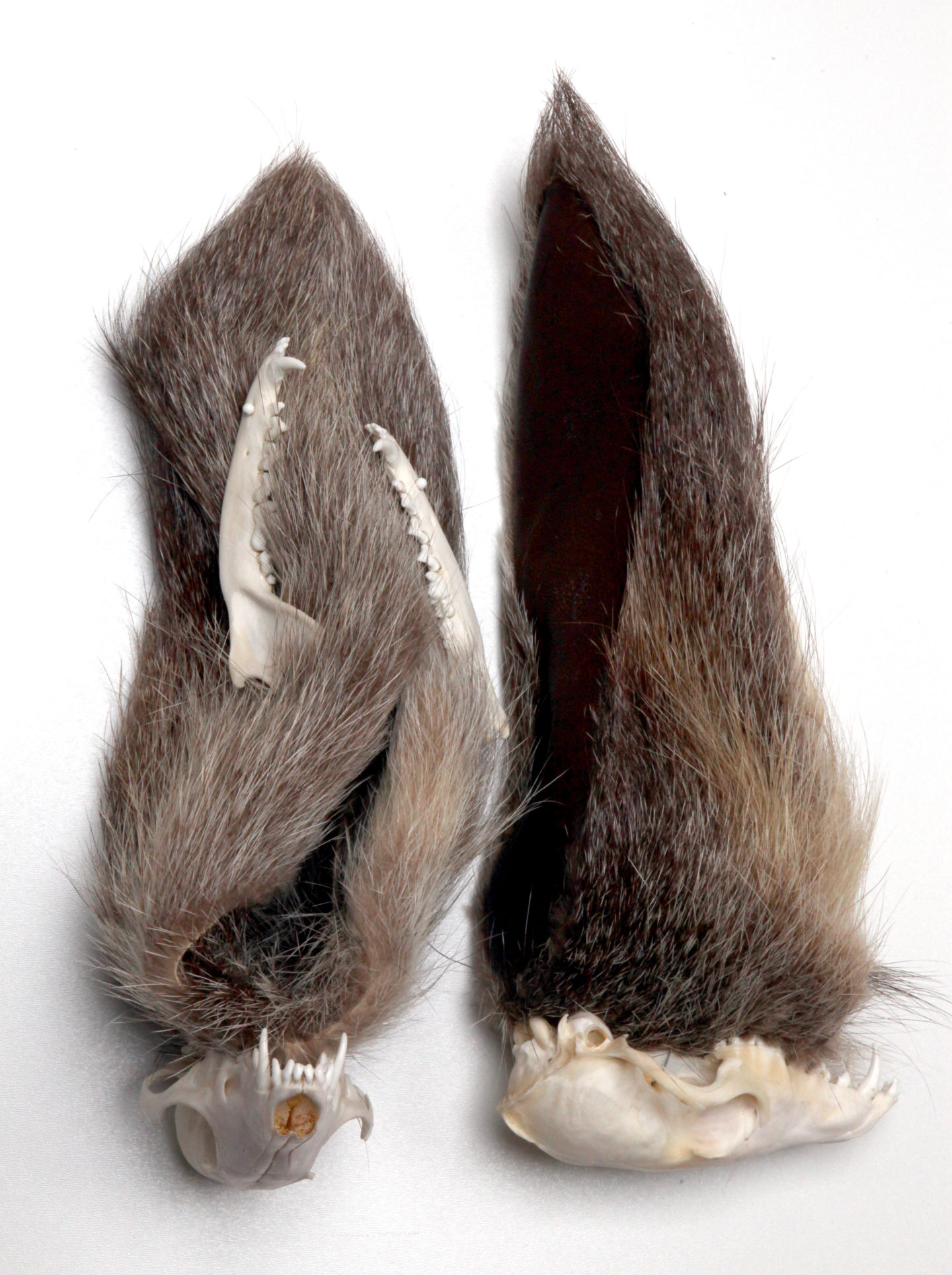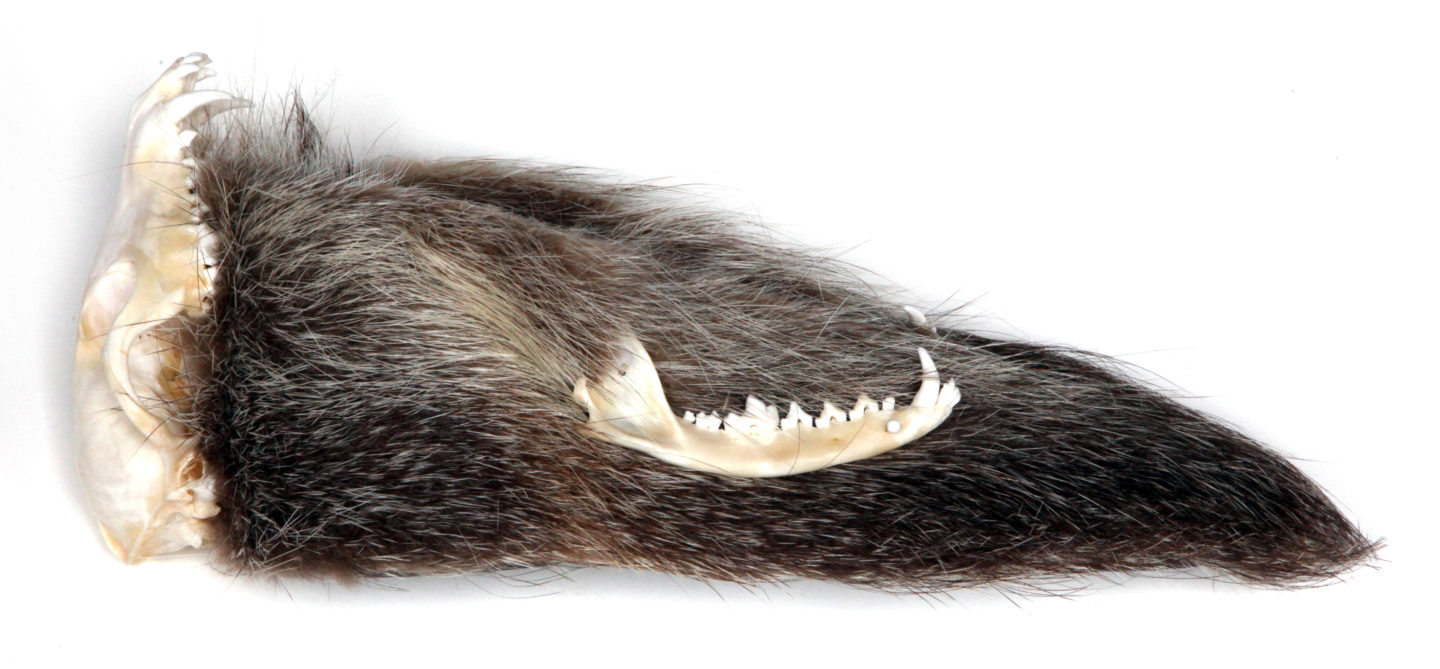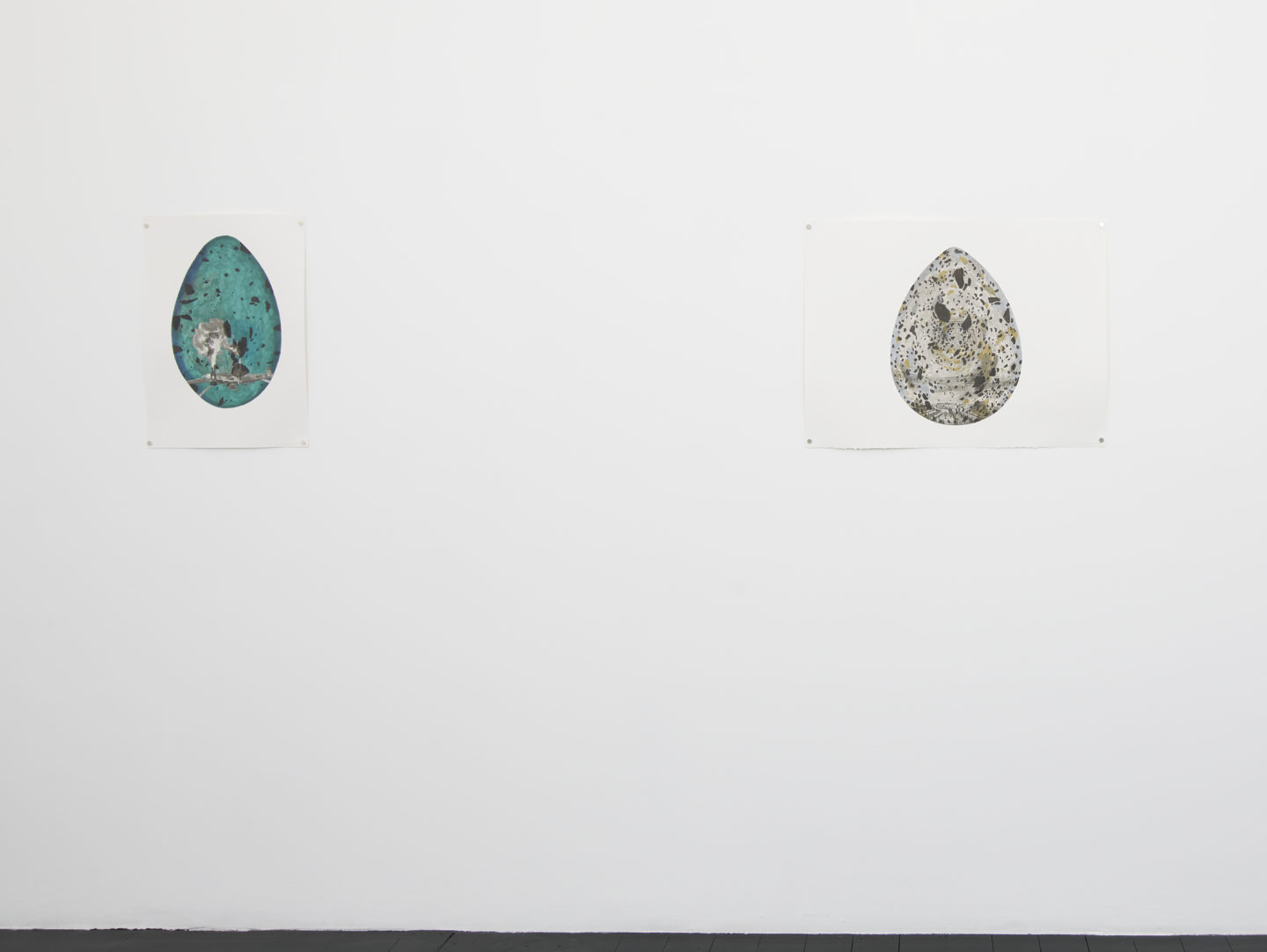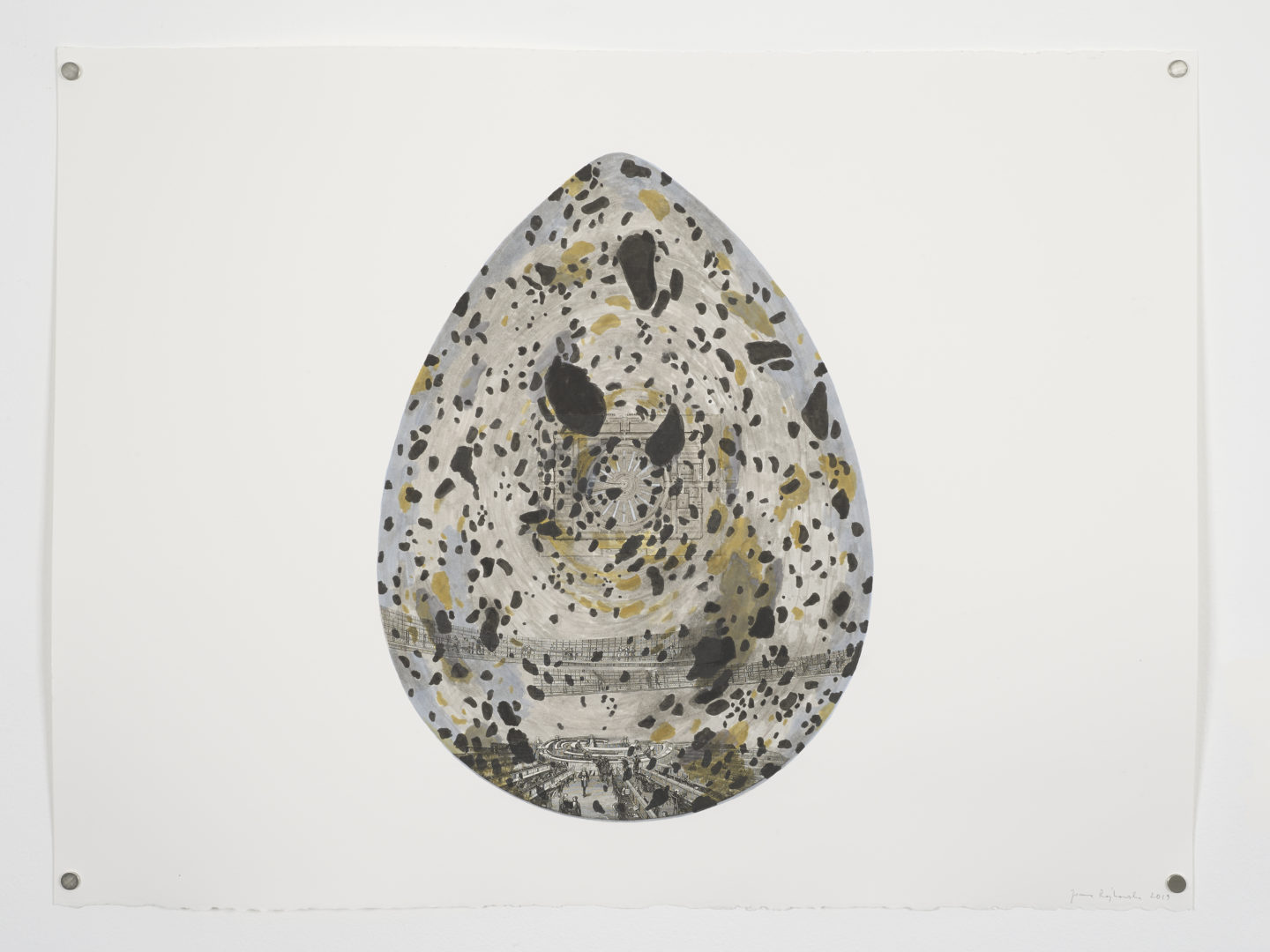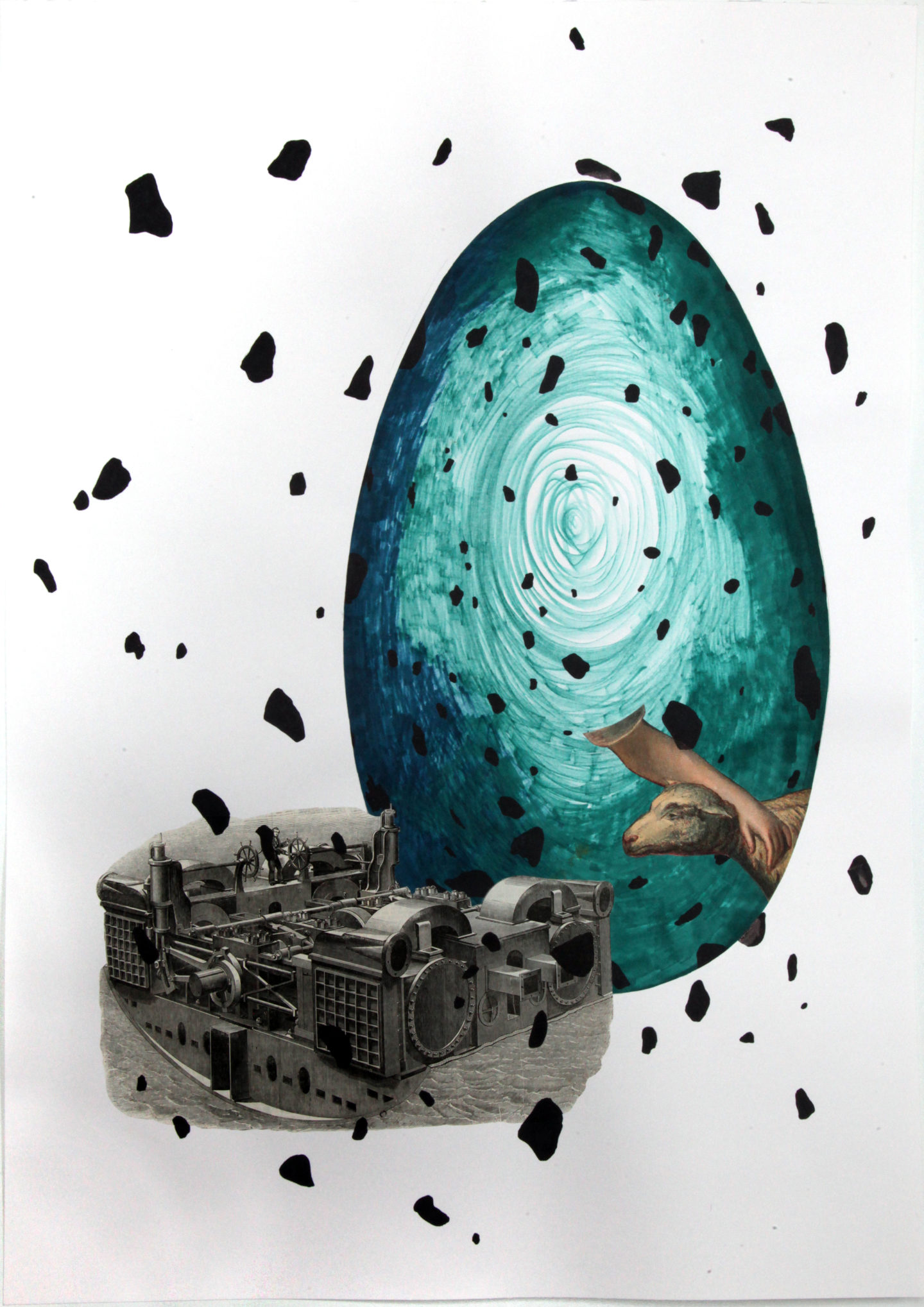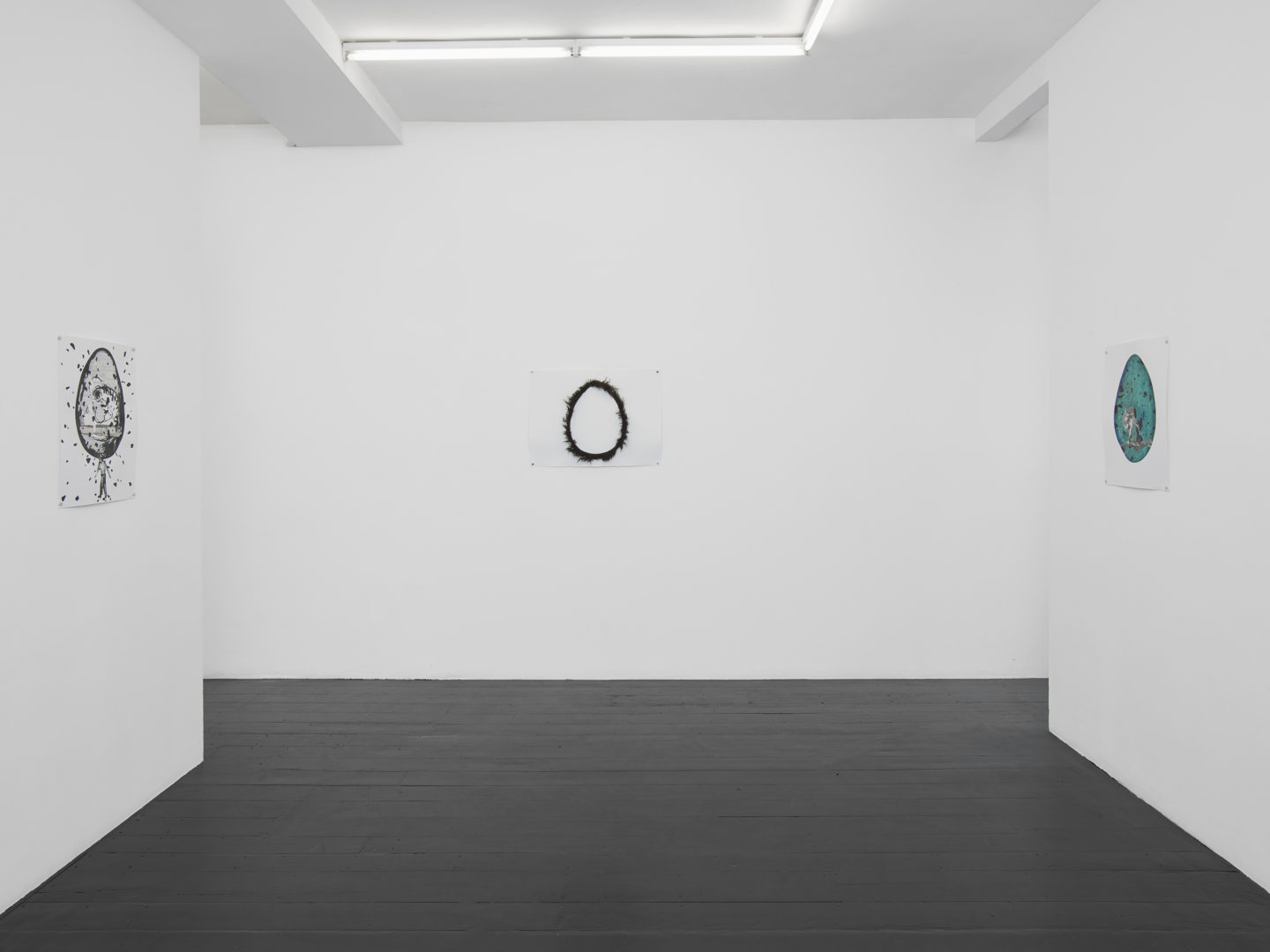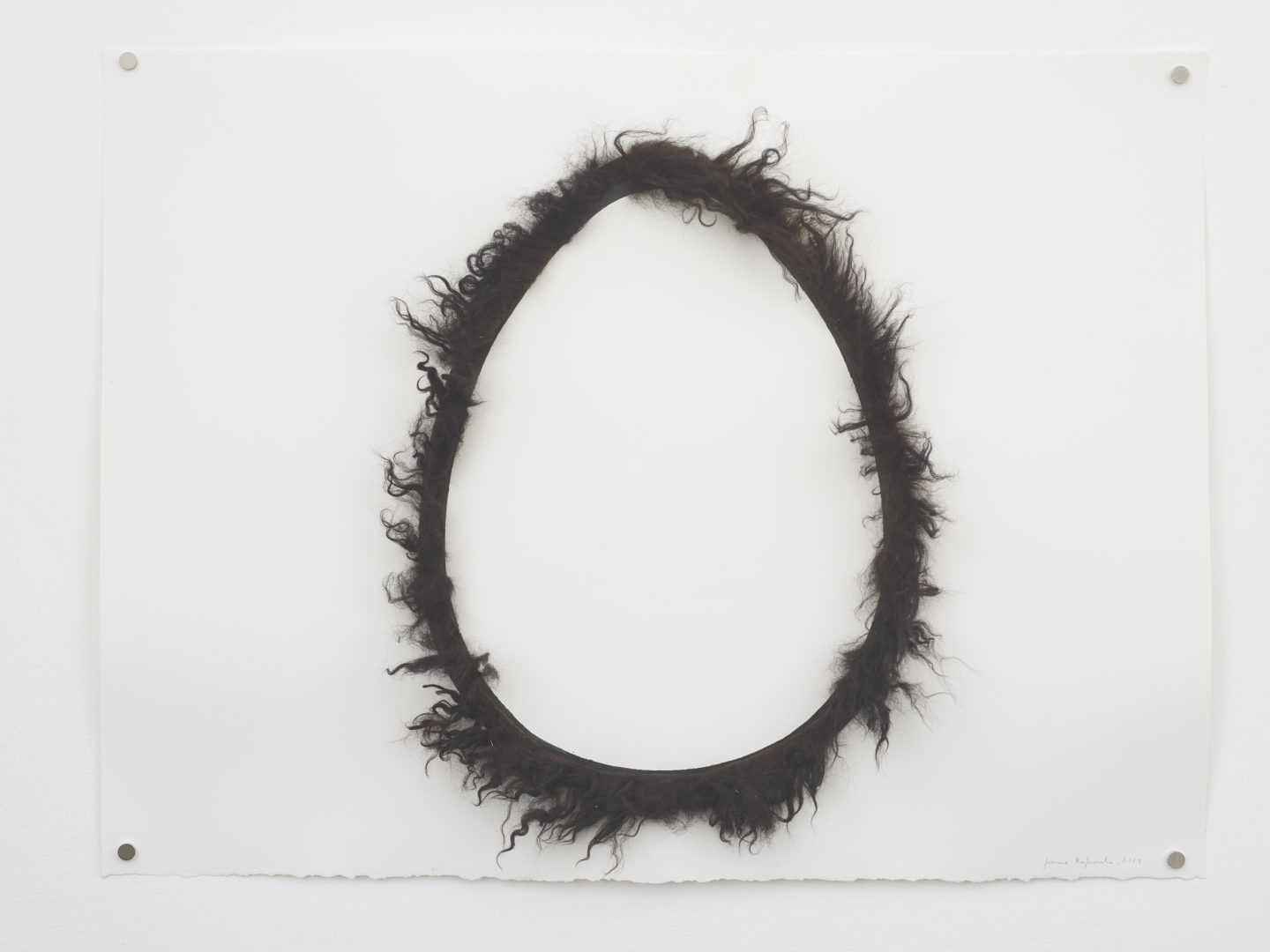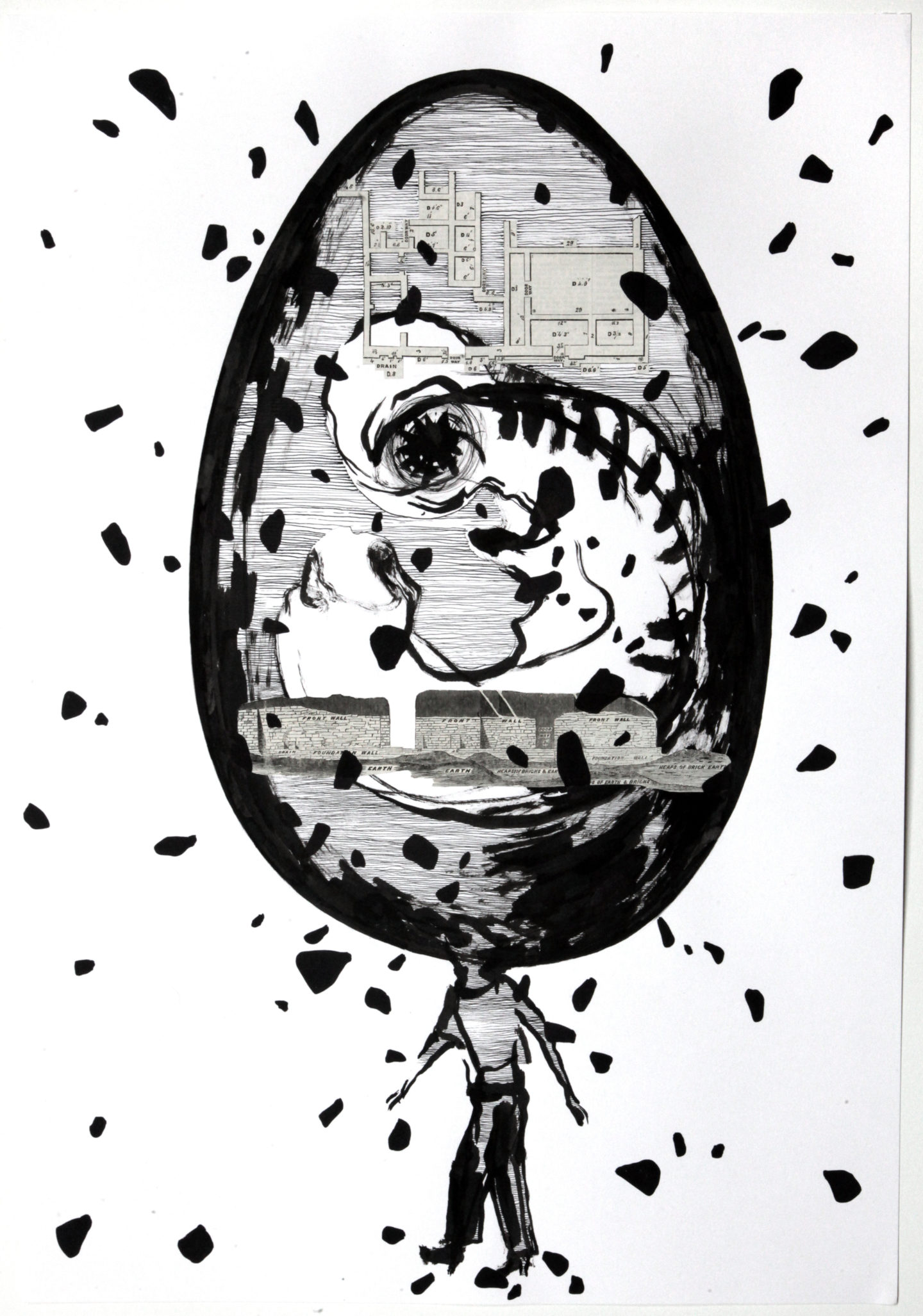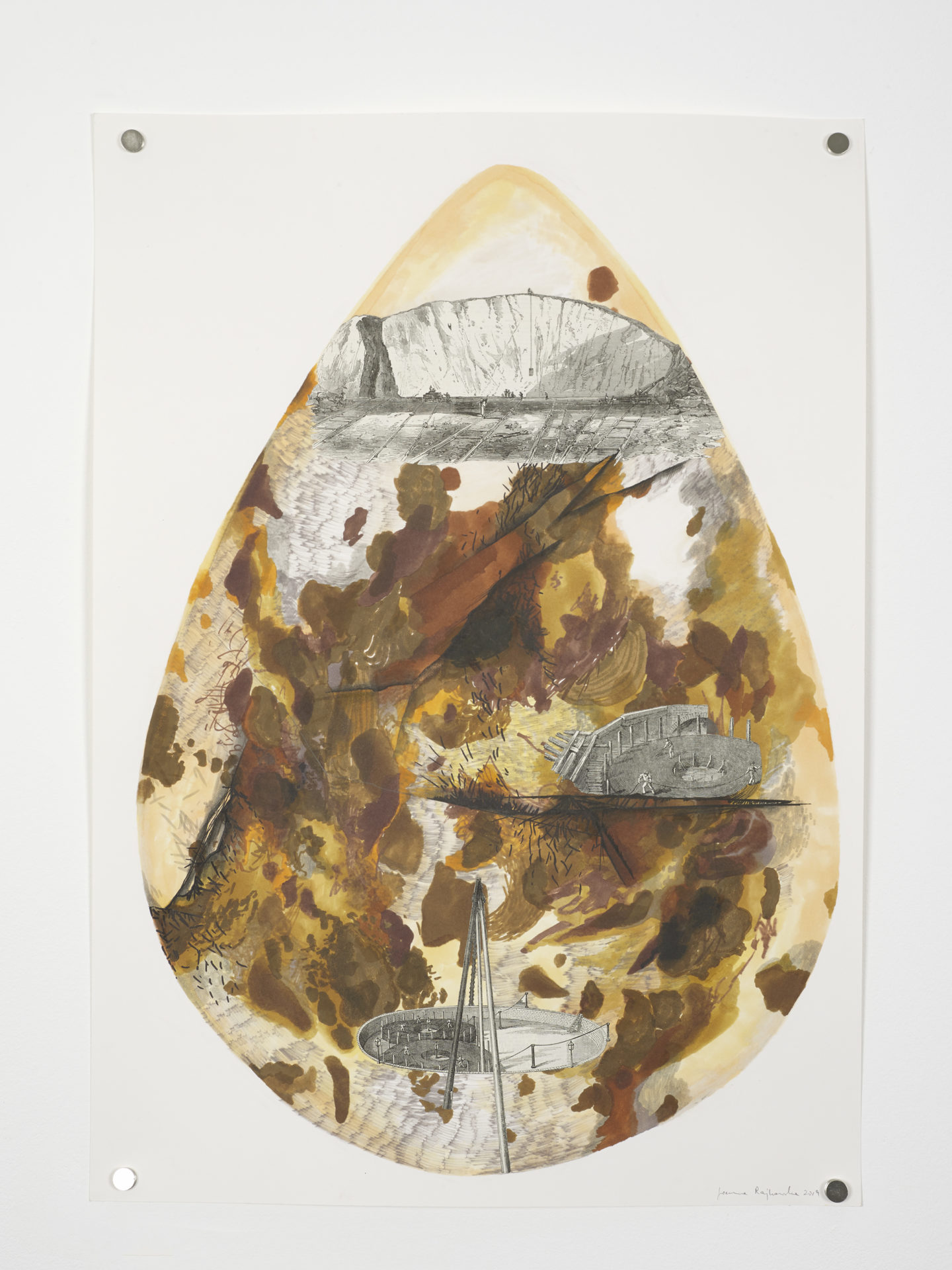The Failure of Mankind
18 September - 31 October 2019,
solo exhibition at l'étrangère gallery, London
l'étrangère Gallery, London

This is a solo exhibition of Joanna Rajkowska’s new works, which follow on from ideas developed for her most recent sound sculpture, The Hatchling, a large-scale replica of a blackbird’s egg, exhibited at Frieze Sculpture 2019. The Hatchling emits the sounds of the labour of hatching birds: their heartbeat, the pecking of the shell and the first vocal attempts to signal their coming to the world.
The Hatchling inspired a wide range of reflections on the power of empathy and humans’ ability to feel and understand other species. It signals the fundamental importance of and our dependence on other species.
To develop empathy for the animal world, Rajkowska suggests that we put ourselves in their ‘skin’ and try to ‘become’ them. To facilitate this process she produced masks and shoes using animal fur and bones. Additionally she used objects that she found discarded in the forest by her house in the country: beer cans cut into strips, circuits and cables, which point to the fact that now human pollution is unfortunately an inseparable part of our environment.
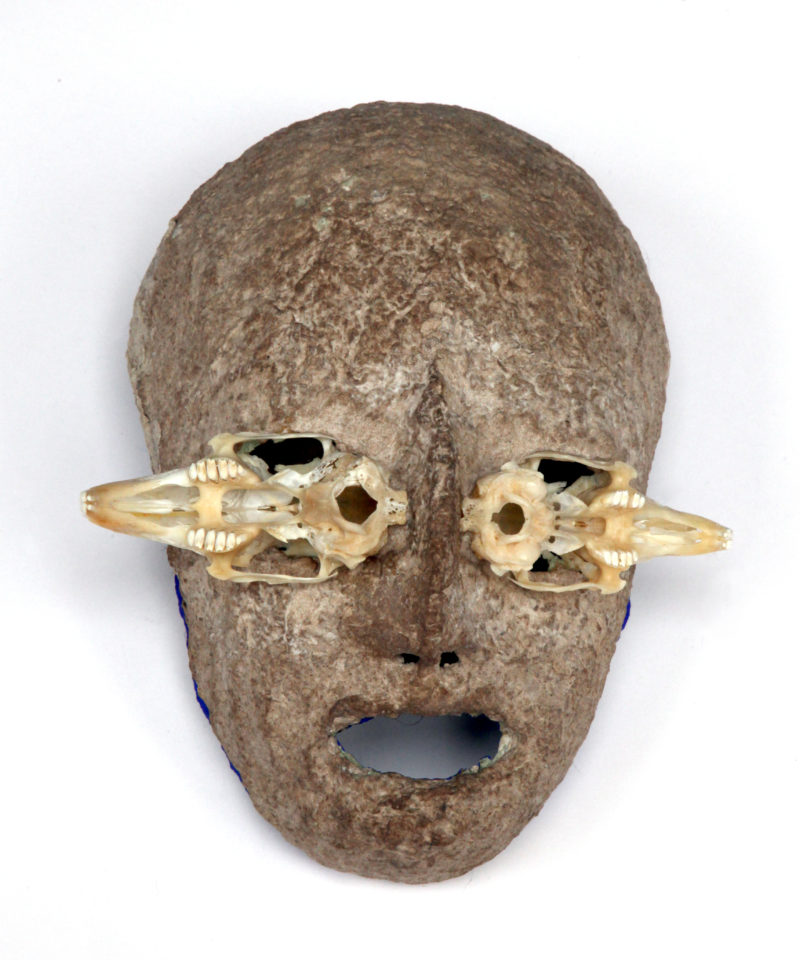
A slightly different thread can be found in the collages with the shape of an egg as a leitmotiv. Here the egg represents the distorted globe, referencing the earth. The egg-earth is used to reflect on how we humans, in the age of Anthropocene, irreversibly changed the landscape through its appropriation. The collages are made using cutouts from The Illustrated London News from 1857, at the height of the industrial revolution. The newspaper proudly presented not so much the products but the power of production and its sites. We see quarries, mines, factories alongside the navy and the army securing the social and economic order. Human beings are usually tiny and lost within the industrial landscape. These collages point to human domination over the earth. One of them shows a lady’s hand over a lamb, referencing Rousseau, where harmony is based on human hegemony.
The series of photographs, Avant-garde for Insects, offers a different context for reflections on the environment and post-human nature. They show six rooms of an insect-house, where insects are exposed to the classics of the Avant-garde. Originally an old doll’s house, it was rebuilt by the artist in 2015 and placed in the open air. This project is meant to be observed and photographed for many years. Here, insects live with the doll’s furniture, perforated so that they can enter. They can use the miniature bathroom equipment, engage with the mess in the attic and in the kitchen. A miniature selection of the reproductions of classic modernist artworks are placed on the walls. The failure of the Avant-garde to change the world is put in stark relief. Perhaps insects might come to learn about human culture after the demise of the human race.
